Athens is known for many things but at the very top of the list has to be the Acropolis. It’s one of the most visited ruins in Athens and rightly so given the incredible amount of history that is associated with it but it’s not the only ruin in Athens and you should definitely consider checking out some of the other great ancient ruins in Athens on your visit to the city.
Majority of the sites are within walking distance from the other ruins so it’s quite easy to see them all. Kermeikos is the outlier but is quite close to the core anyways and all the sites except the Olympieon can be found on the North Side of the Acropolis. You could for sure manage all of the sites in a day especially if you start early in the day but it will be a pretty long day. Some of the sites are smaller and have less to see so they don’t take as long but the Acropolis is easily 2 if not 3 hours on its own and the Ancient Agora deserves a few hours as well.
I had a difficult time sourcing information on opening hours and costs when we were there so I of course put together this handy guide so nobody else would have the same problem we did. Read on for some must visit ruins in Athens and let me know in the comments if you have any questions. I do want to point out that the ruins aren’t very clearly labelled. We walked past Hadrian’s Library many times before we realized we were actually there. You can definitely ask locals but if you pay attention to the walls you’re walking past you’ll see smaller signage indicating what they are!
Combination Ticket
There’s a combination ticket which provides you entrance to all seven of the ruins (The Acropolis, the Roman Agora, Hadrian’s Library, the Archaeological Museum of Kerameikos, the Ancient Agora, the Archaeological Site of Lykeion and Olympeion) on this list!
The ticket can be purchased at any of the sites and if you visit one of the other sites first then it’s a great way to avoid the line-up at the Acropolis because you can buy the combination ticket and already have your ticket to the Acropolis and therefore be able to bypass the lineups at the Acropolis.
You’ll be provided with a physical ticket that will have little squares that can be ripped off to be used as tickets at each individual site. You do need to keep the package intact (as in the part that the stubs are torn from) because they correspond to the dates the tickets are valid on and it’s used for verification purposes.
In peak-season this ticket is 30 euros and in off-season the ticket is 15 euros. Unless you’re in Athens for only a day, I’d recommend getting the combo ticket because it’s valid for 5 days and a lot of the sites are fairly close to the center of Athens so they’re worth checking out. If you’re looking for the individual costs of tickets they can be found below with the information for each individual site.
In addition to the savings from the combination ticket which is applicable to everyone a number of people qualify for a 50% discount/free admission. That special pricing applies to those who are seniors over 65 with a Greek or EU citizenship, those are under 18, teachers accompanying school groups, somebody accompanying a blind or handicapable person and university/higher education students. Please note you will be asked to show valid ID proving that you qualify for any of the above categories.
You also have the options to buy tickets to the ruins online now. The check-out process is a little slow but it’s a great way to avoid line-ups if you’re short on time during your visit to Athens!
The Acropolis
Hours: During the winter months the Acropolis is open every day between 8 am and 5 pm (last admission is 4:30 pm). During the summer months the Acropolis is open every day between 8 am and 8 pm (last admission at 7:30 pm). On the following days it is completely closed: January 1st, March 25th, May 1st, Easter Sunday, December 25th and December 26th
Cost of admission: 20 euros in peak season (April 1st to October 31st), 10 euros in off-peak season (November 1st to March 31st). Part of the combination ticket (see above).
Free Admission Days: March 6, April 18, May 18, Last Weekend of September, October 28, Every First Sunday from Nov 1st to March 31st
Directions: The three metro stations around the Acropolis are Thesion, Monastiraki and Acropolis and you’ll be able to walk to the Acropolis from any of them
The Acropolis is pretty much the go to spot in Athens. It’s on every list possible and for good reason. The Acropolis is a collection of monuments/buildings and the word itself actually means a citadel or fortified part of an Ancient Greek city, typically built on a hill. The main monuments you’ll be visiting as part of your visit to the Acropolis are the Odean of Herodes Atticus, Beulé Gate, the Proplyaia, the Temple of Athena Nike, the Theater of Dionysus, the Erectheion and and the Parthenon.
Although it’s not the main purpose of visiting the Acropolis, make sure to take some time taking in the views of the city from it. It’s pretty much unbeatable!
The Roman Agora
Hours: During the winter months the Roman Agora is open every day between 8 am and 5 pm (last admission is 4:30 pm). During the summer months the Roman Agora is open every day between 8 am and 8 pm (last admission at 7:30 pm). On the following days it is completely closed: January 1st, March 25th, May 1st, Easter Sunday, December 25th and December 26th
Cost of admission: 6 euros in peak season (April 1st to October 31st), 3 euros in off-peak season (November 1st to March 31st)
Free Admission Days: March 6, April 18, May 18, Last Weekend of September, October 28, Every First Sunday from November 1st to March 31st
Directions: Closest subway station is Monastiraki
The Roman Agora, also known as the Roman Forum, was built between 19 and 11 B.C. by donations from Julius Caesar and Augustus. The Roman Agora is a large courtyard that the town was built and surrounded by. It consisted of stores and commercial buildings. One of the highlights of the ruins is the Tower of the Winds which is an octagonal tower that is surprisingly still very intact and has some great carvings.
One of the other monuments that’s still standing and is great is the Gate of Athena Archegetis. It’s the entrance way with the four large columns (pictured below).
Hadrian’s Library
Hours: During the winter months Hadrian’s Library is open every day between 8 am and 5 pm (last admission is 4:30 pm). During the summer months Hadrian’s Library is open every day between 8 am and 8 pm (last admission at 7:30 pm). On the following days it is completely closed: January 1st, March 25th, May 1st, Easter Sunday, December 25th and December 26th
Cost of admission: 4 euros in peak season (April 1st to October 31st), 2 euros in off-peak season (November 1st to March 31st). Part of the combination ticket (see above)
Directions: The closest subway station is Monastiraki
Hadrian’s Library was built in AD 132 by, you guessed it, emperor Hadrian. It was destroyed in AD 267 but was then repaired in AD 412. The site contains a number of different buildings that are surprisingly intact. The most important of these are the Quatrefoil Building, the Megale Panaghia Church and the ruins of another church. The Quatrefoil Building is the building with the four columns you can see below.
Kerameikos
Hours: During the winter months (Jan 1, 2019 to April 12, 2019) Kerameikos is open every day between 8:30 am and 4 pm (last admission is 3:45 pm). During the summer months (April 13, 2019 to October 31, 2019) Kerameikos is open every day between 8 am and 8 pm (last admission at 7:45 pm). On the following days it is completely closed: January 1st, March 25th, May 1st, Easter Sunday, December 25th and December 26th
Cost of admission: 8 euros in peak season (April 1st to October 31st), 4 euros in off-peak season (November 1st to March 31st). Part of the combination ticket (see above)
Directions: The closest subway station is Thissio or Kerameikos
Kerameikos is an ancient part of one of the largest political divisions in Athens. It was where a lot of potters and vase painters settled and eventually became the main center of production of vases which you most likely have seen in museums across the world.
Due to overflowing of the nearby river, the area was converted into a cemetery and ultimately became one of the most important cemeteries in the ancient times. The earliest tombs at the cemetery date back to the early Bronze age!
The Kerameikos site also includes admission to the Kerameikos Museum which is a nice break from walking around in the heat since it’s air conditioned! It’s a one story museum but there are multiple rooms where the items are displayed chronologically but they’re also sorted by their subject. The museum has been around since 1937
Ancient Agora
Hours: During the winter months the Ancient Agora is open every day between 8 am and 5 pm (last admission is 4:30 pm). During the summer months the Ancient Agora is open every day between 8 am and 8 pm (last admission at 7:30 pm). On the following days it is completely closed: January 1st, March 25th, May 1st, Easter Sunday, December 25th and December 26th
Cost of admission: 8 euros in peak season (April 1st to October 31st), 4 euros in off-peak season (November 1st to March 31st). Part of the combination ticket (see above)
Directions: The closest subway stations are Thiseio or Monastiraki
The Ancient Agora was essentially the hub of old Athens. It was a market place selling food and household goods but it was also the center of the city for politics and law. It also had the main road of the town going through it which lead directly to the Acropolis.
The Ancient Agora has a number of buildings to explore and next to the Acropolis this is probably one of the biggest sites so you’d want to dedicate at least a couple of hours here. On top of the hill you’ll find the Temple of Hephaestus which is incredibly well preserved because it used to function as a church.
In the reconstructed Stoa of Attalos, the building with the white smaller columns, you’ll find the museum of the Ancient Agora. There are a number of artifacts, statues and mini buildings of what the area used to look like.
The Ancient Agora does spread out a bit so there is some walking here but if you walk up to the hill with the Temple of Hephaestus you’re in for an excellent viewpoint of the Acropolis!
Olympieon
Hours: During the winter months the Olympieio is open every day between 8 am and 5 pm (last admission is 4:30 pm). During the summer months the Olympieio is open every day between 8 am and 8 pm (last admission at 7:30 pm). On the following days it is completely closed: January 1st, March 25th, May 1st, Easter Sunday, December 25th and December 26th
Cost of admission: 6 euros in peak season (April 1st to October 31st), 3 euros in off-peak season (November 1st to March 31st). Part of the combination ticket (see above)
Directions: The closest subway station is the Acropolis subway station
The Olympieon is often confused with the Temple of Olympian Zeus because it’s one of the biggest attractions to see at the Olympieon but in addition to the Temple of Olympian Zeus there are also other remains of Roman baths, classical residences, a basilica, part of the old fortification wall and other temples of smaller scale!
The Temple of Olympian Zeus is incredibly big and the obvious highlight here. It’s hard to comprehend how big it is through pictures alone but you can look at the picture below for scale to kind of see what I’m talking about. The columns are super impressive in size but also in the details on them. There were originally 3 rows of 8 columns (for a total of 24 columns) but only 16 remain. The temple used to house gold and ivory statue of Zeus in addition a statue of the emperor.
While not an official ruins in the sense that it requires a ticket, the Arch of Hadrian is a great left over architectural feat and one 100% worth checking out while you’re in the area to see the Temple of Olympius Zeus. It’s located just outside of the ruins and right on the street!
The Archaeological Site of Lykeion
Hours: During the winter months the Archaeological Site of Lykeion is open every day between 8 am and 5 pm (last admission is 4:30 pm). During the summer months the Archaeological Site of Lykeion is open every day between 8 am and 8 pm (last admission at 7:30 pm). On the following days it is completely closed: January 1st, March 25th, May 1st, Easter Sunday, December 25th and December 26th
Cost of admission: 4 euros in peak season (April 1st to October 31st), 2 euros in off-peak season (November 1st to March 31st). Part of the combination ticket (see above)
Directions: Closest subway station is Evangelismos station but you can access it using bus and tram lines as well (check with your hotel for exact lines)
The Archaeological Site of Lykeion is the site of an ancient gymnasium that was the site of Aristotle’s School of Philosophy. It was originally built in the 4th Century BC and was used for the next 700 years before it was abandoned in the early 4th Century AD.
While the gymnasium was used for training for boxing, wrestling and pankration (a combination of wrestling and boxing) they’re actually much more than what we consider gyms in our modern time. Gymnasiums were more similar to universities/colleges in the fact they also provided education and training for the mind. The Archaeological Site of Lykeion is of such importance because it’s where Aristotle founded his own philosophical school in 335 BC. He taught at the school for 12 years and it’s said that it was the most productive period of his life. So if you’ve ever read anything famous by Aristotle you may be walking in the same steps that he walked in while coming up with them!
This site is probably the one that is the least standing in comparison to the other ones but there are signs with drawings and information that really help you picture what the place would have looked like when it was in use. The walk around the area is not strenuous at all and luckily part of it is shaded which really helps against the strong Athens sun!
There you have it – a complete guide to visiting the Ancient Ruins in Athens. Have you been to any? Are you now interested in anything else besides the Acropolis? Let me know in the comments and as always, pin this post for your upcoming trip!
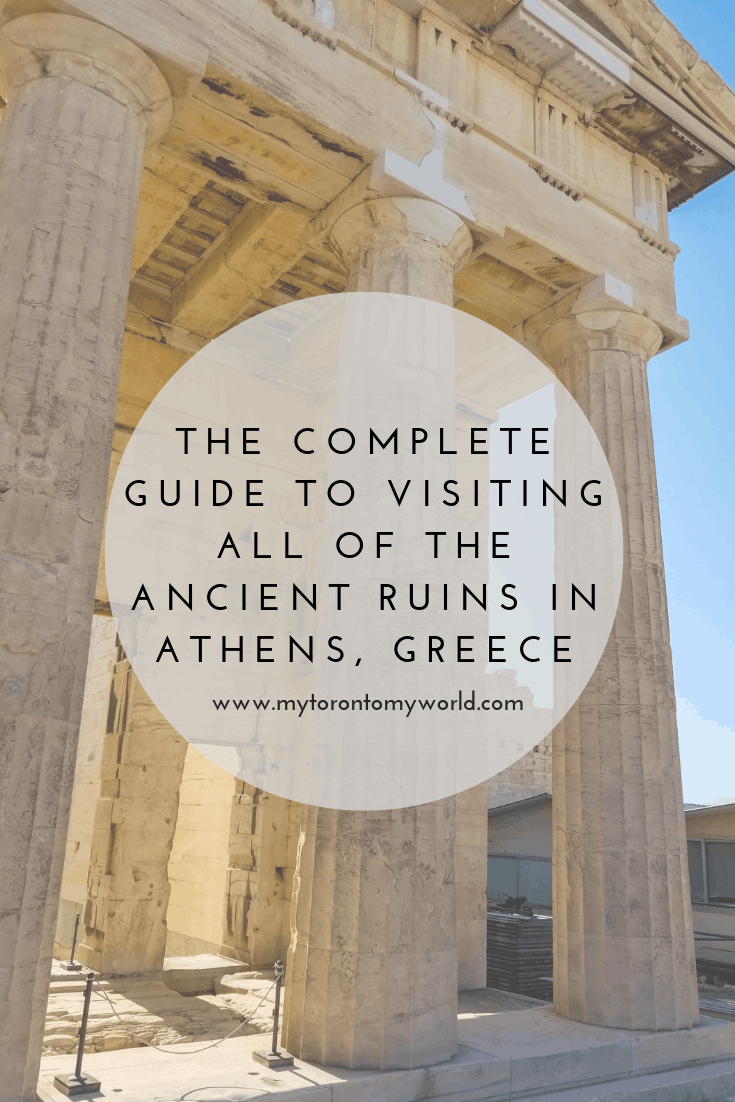 |
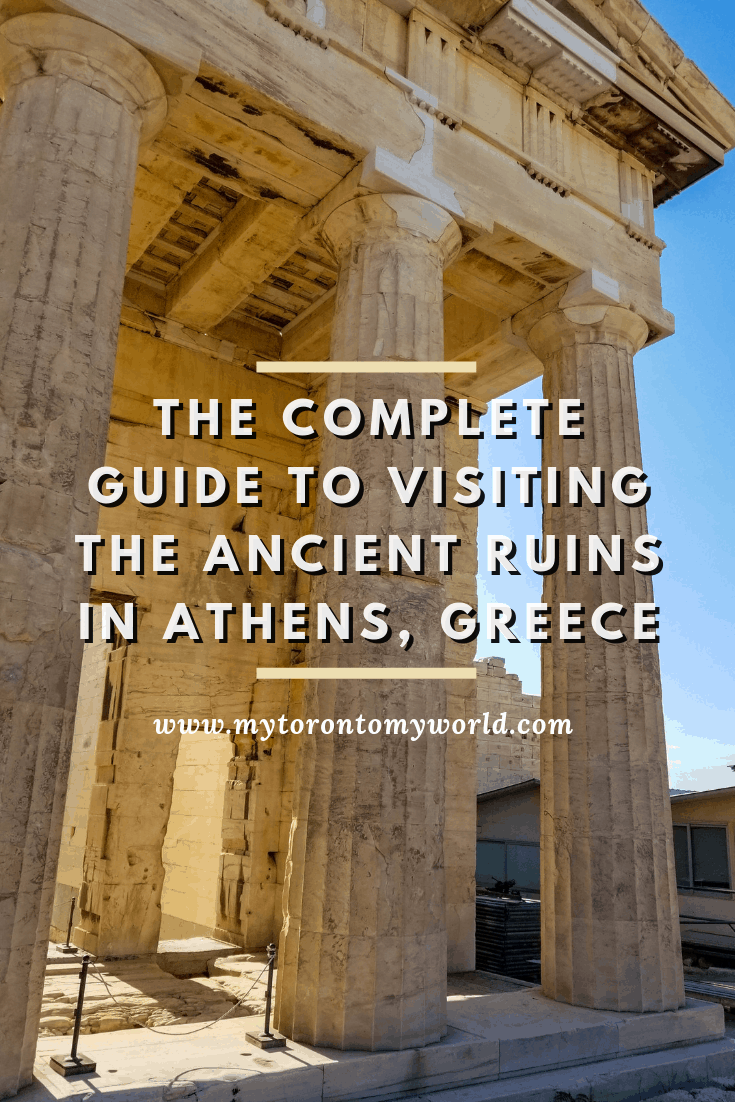 |
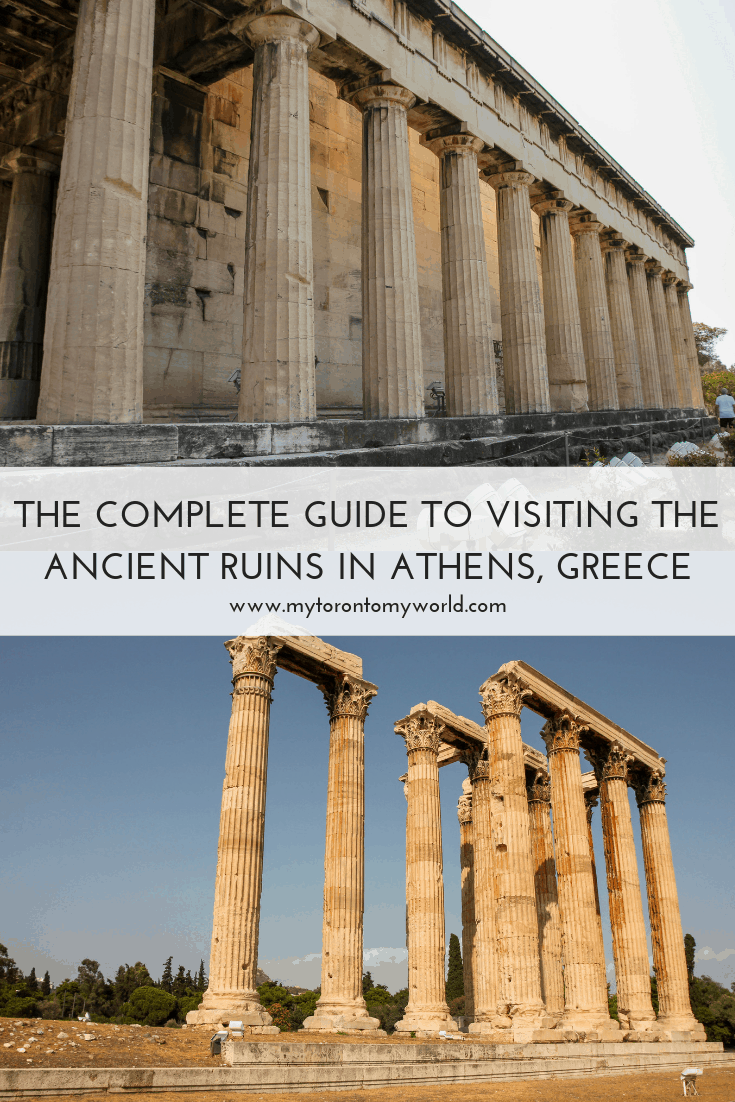 |
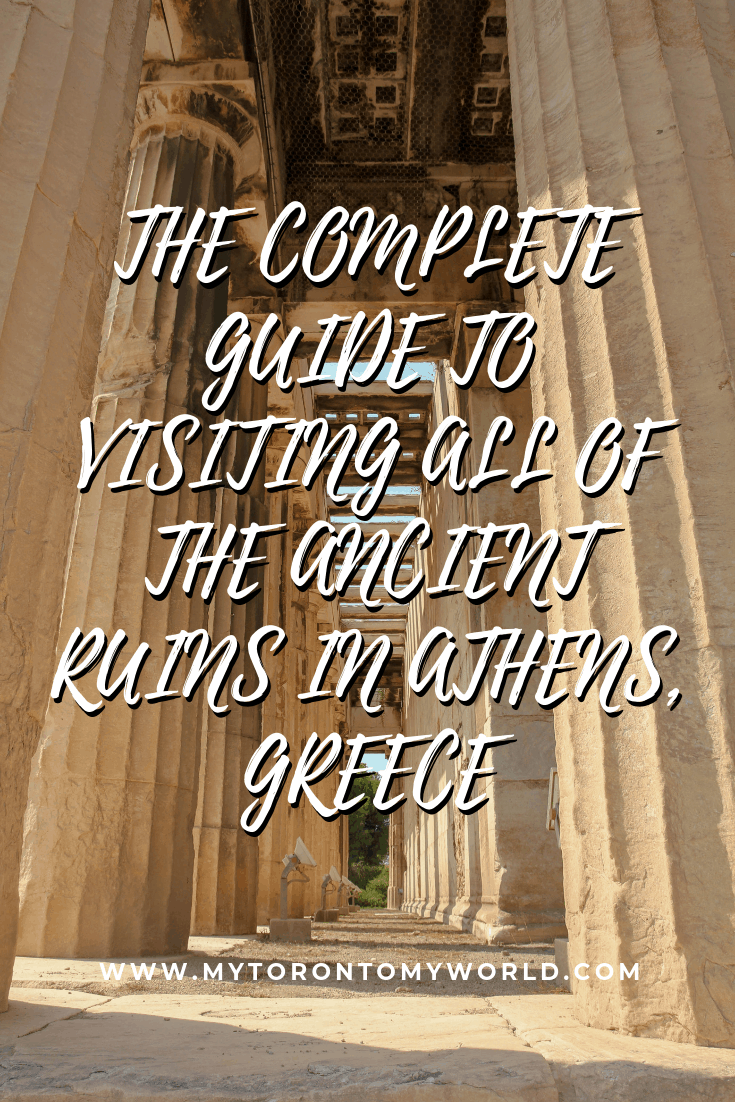 |
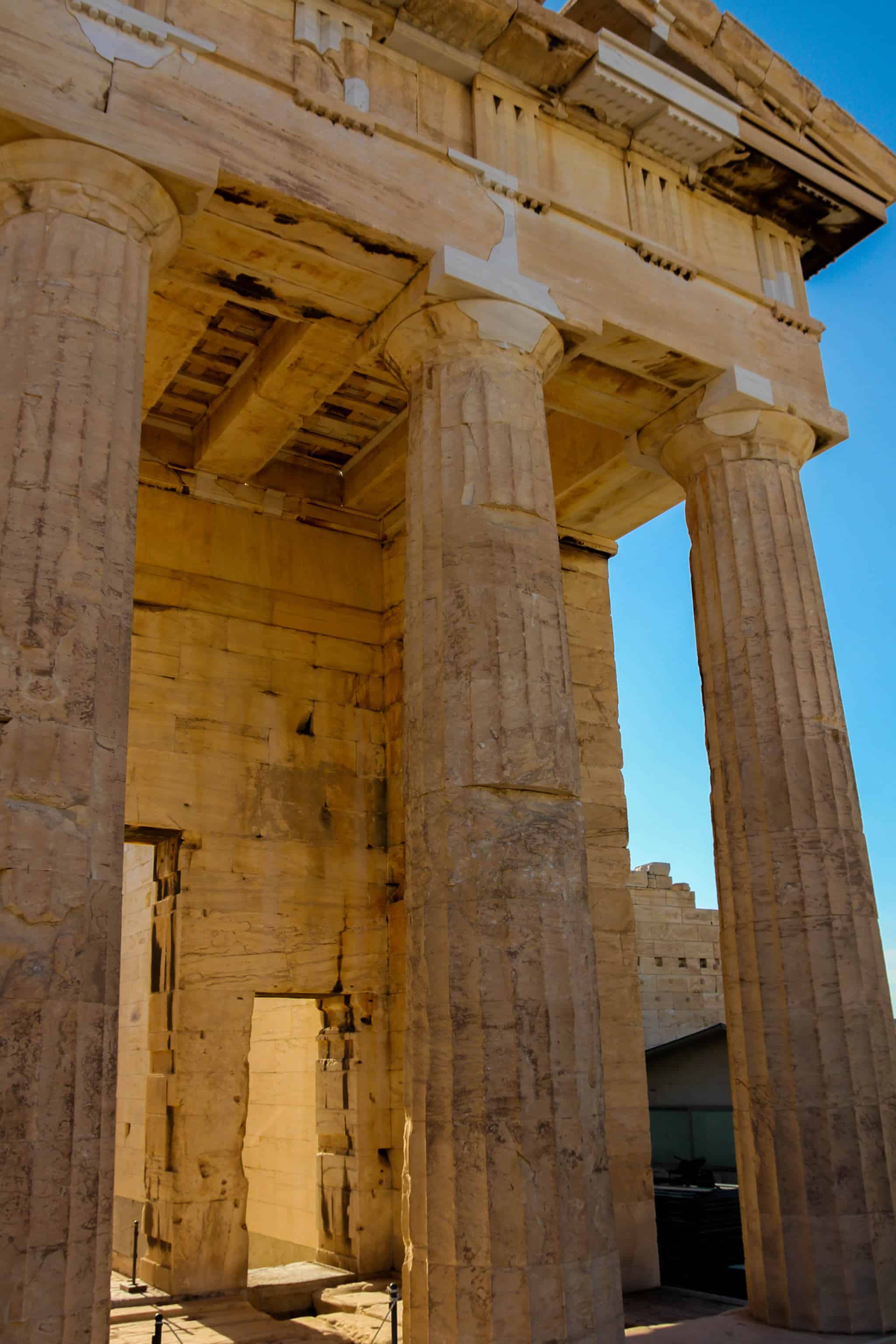
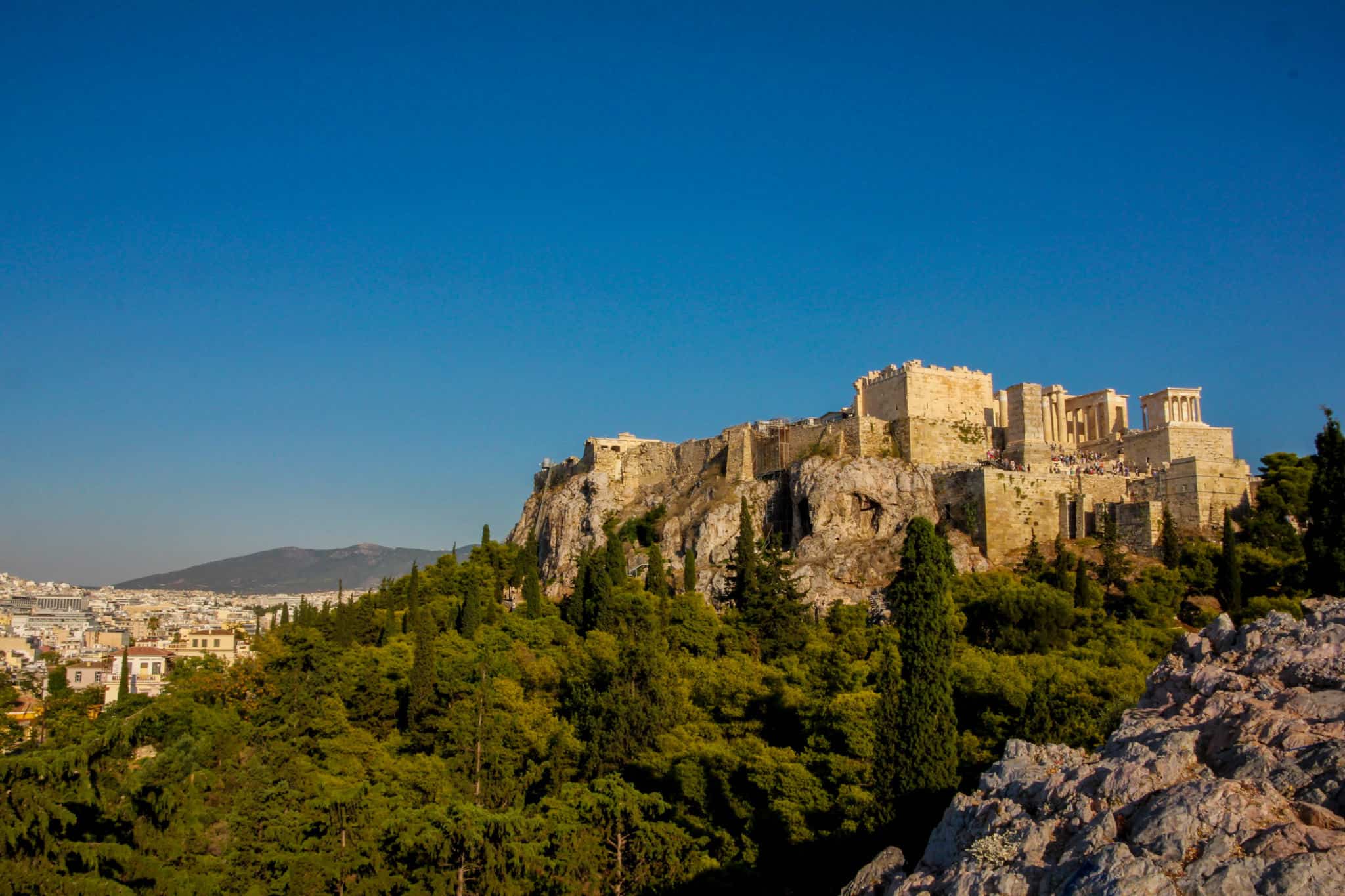
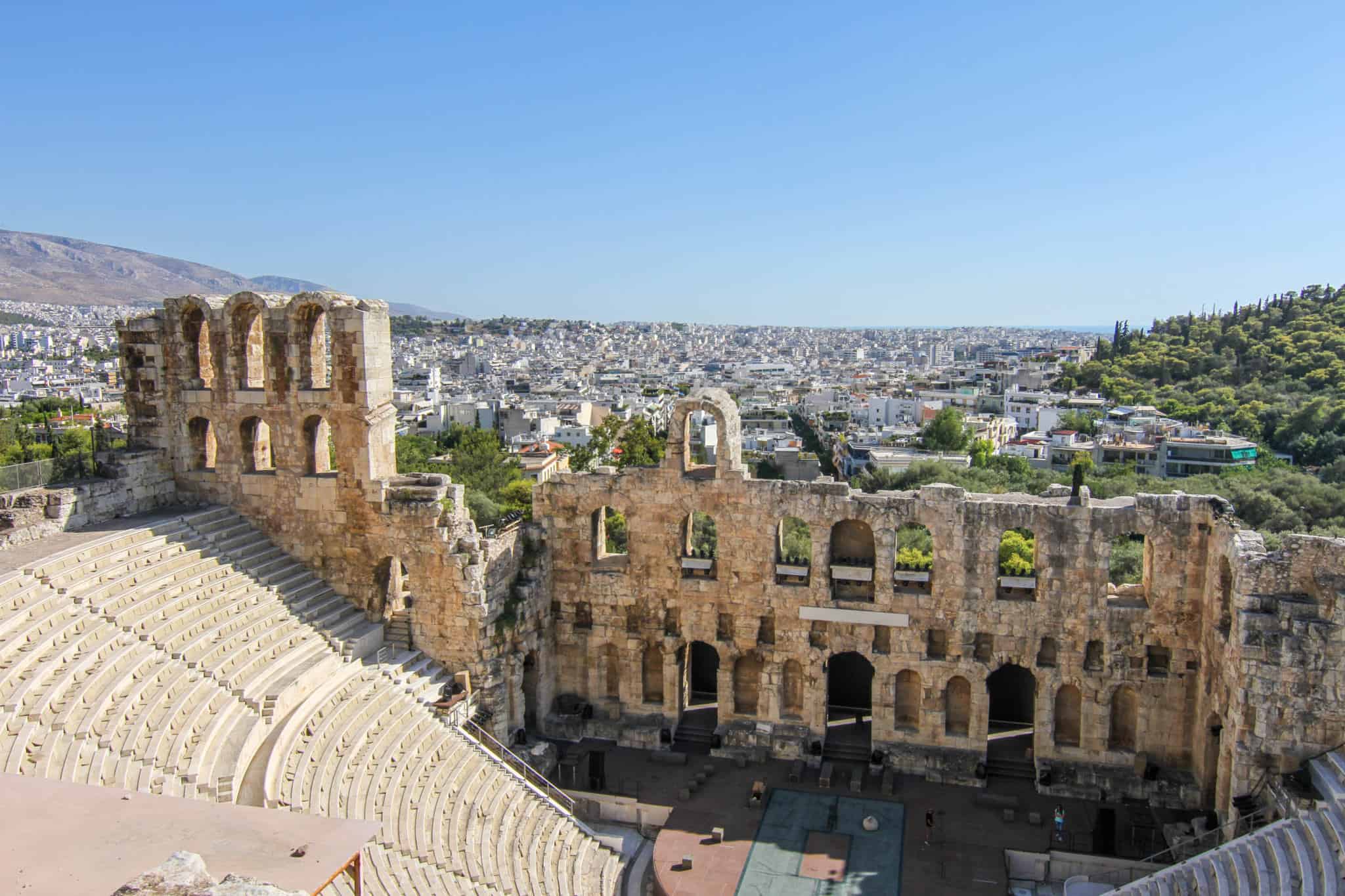
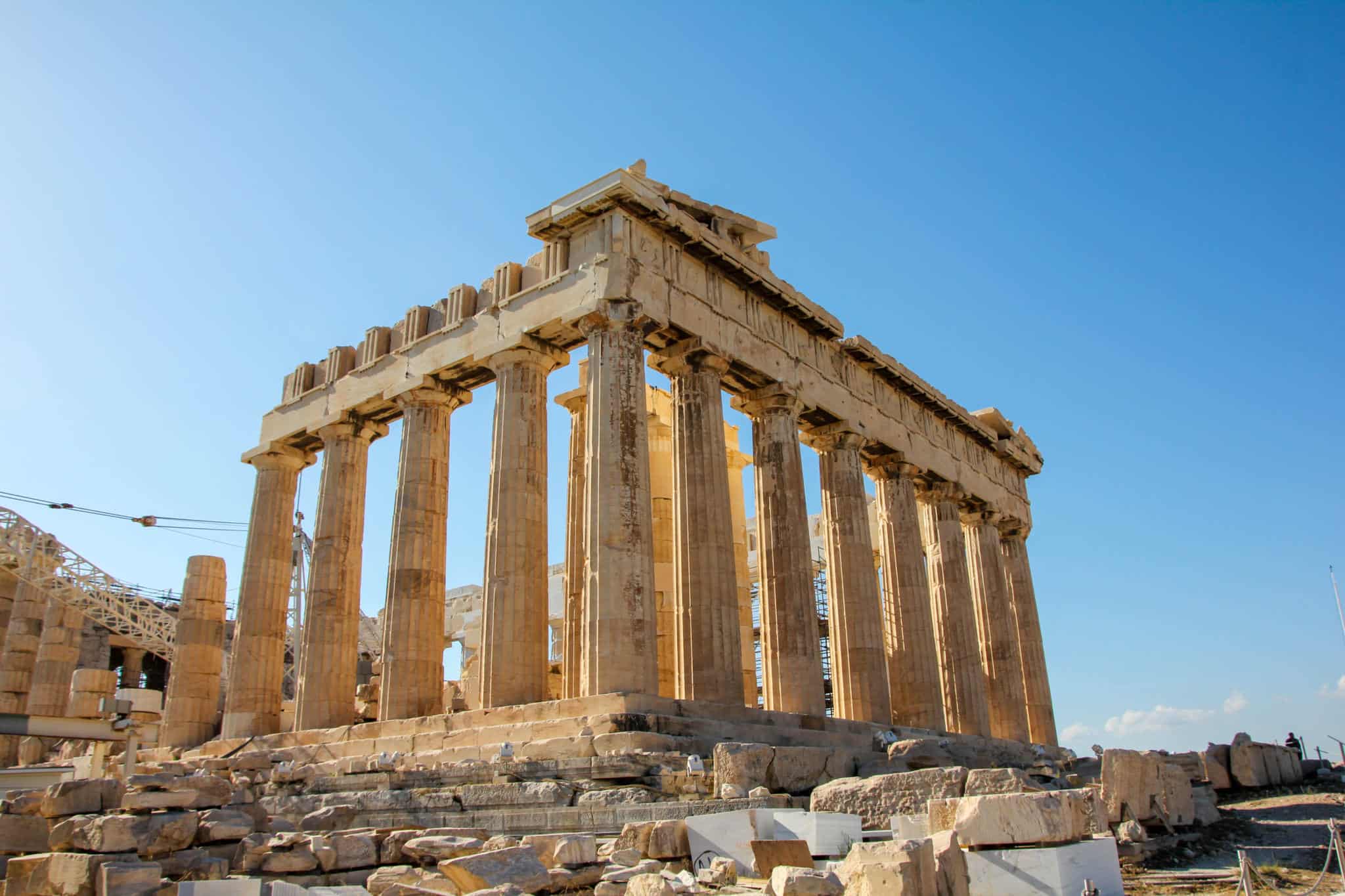
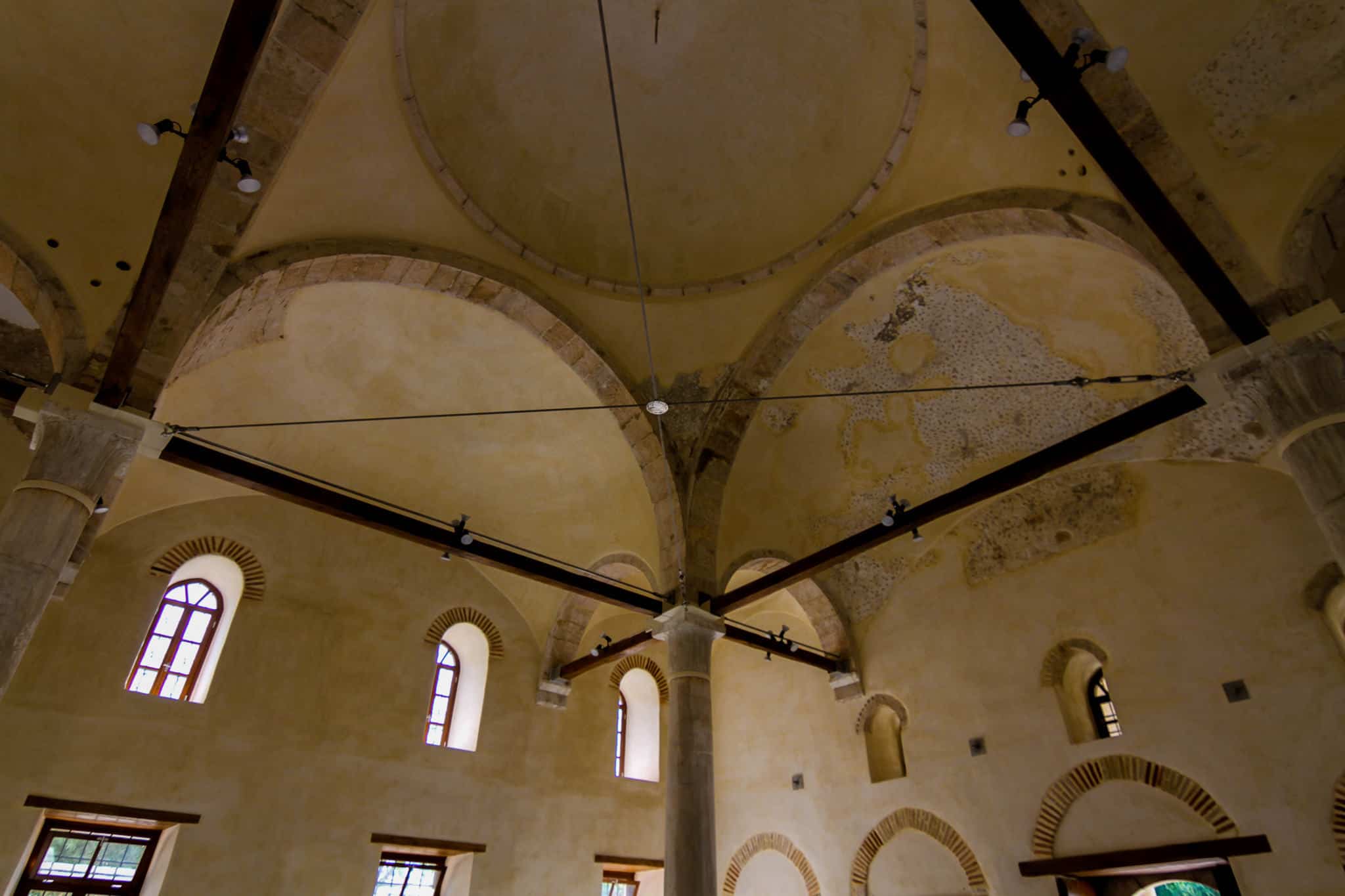
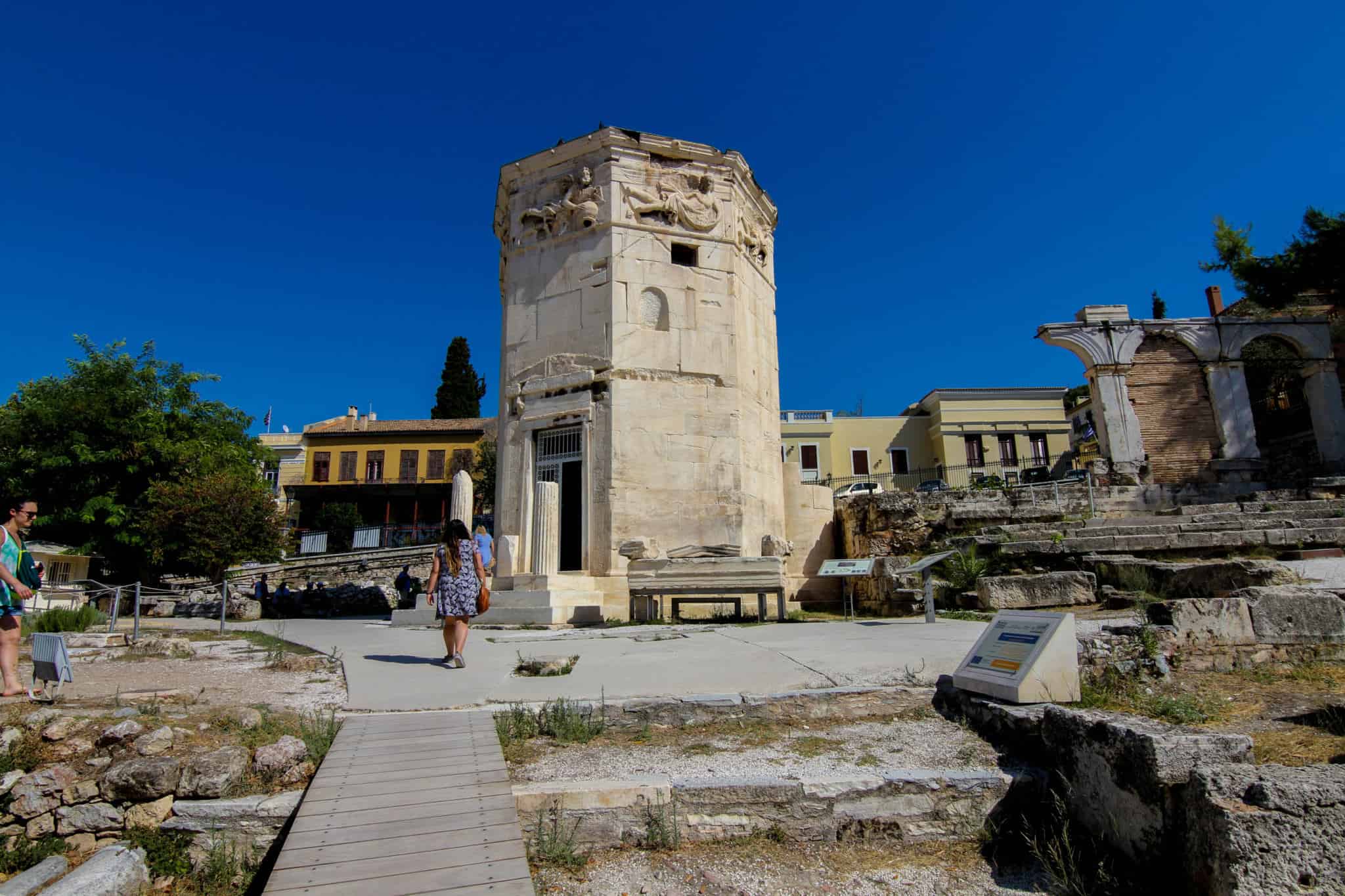
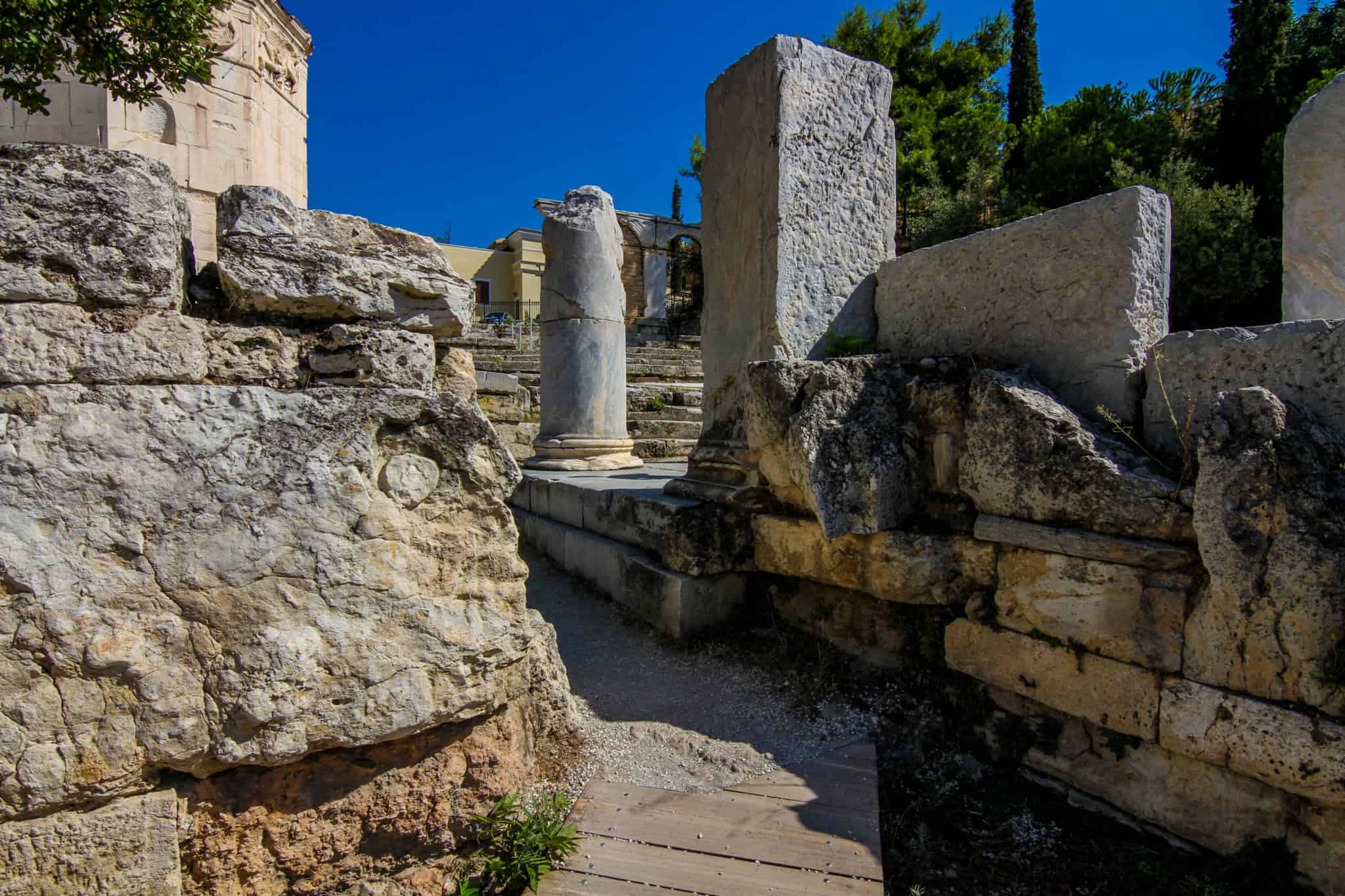
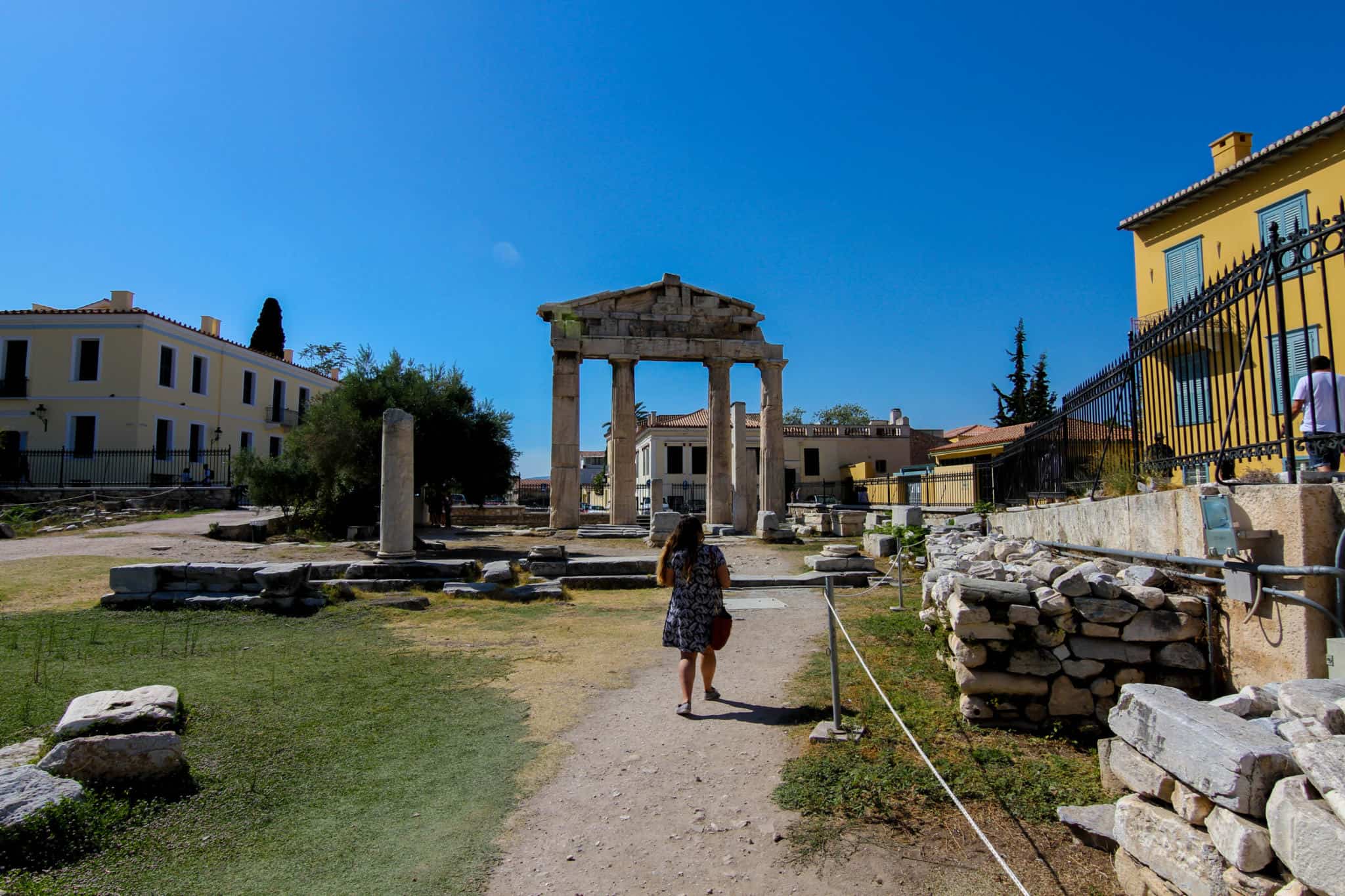
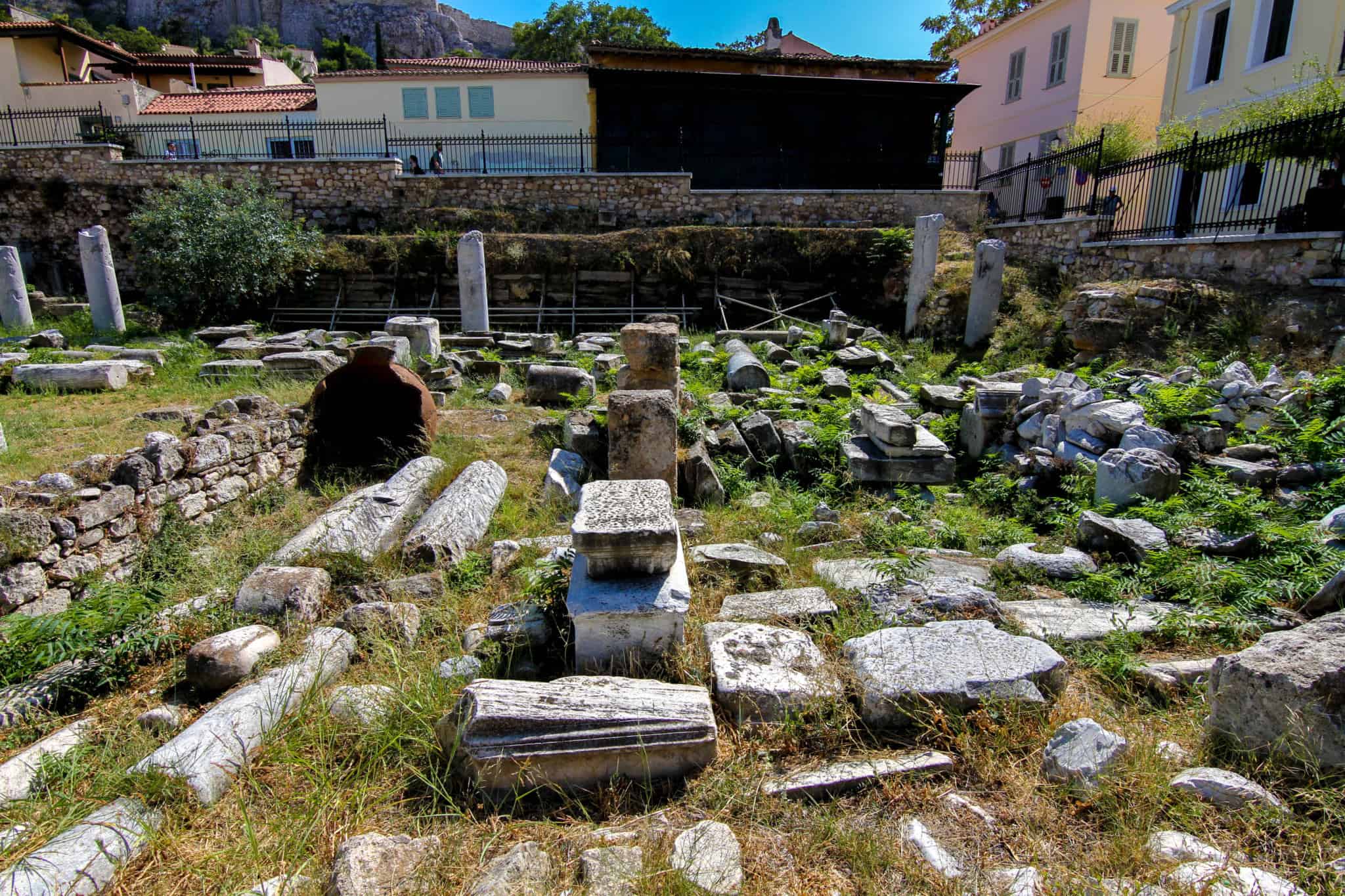
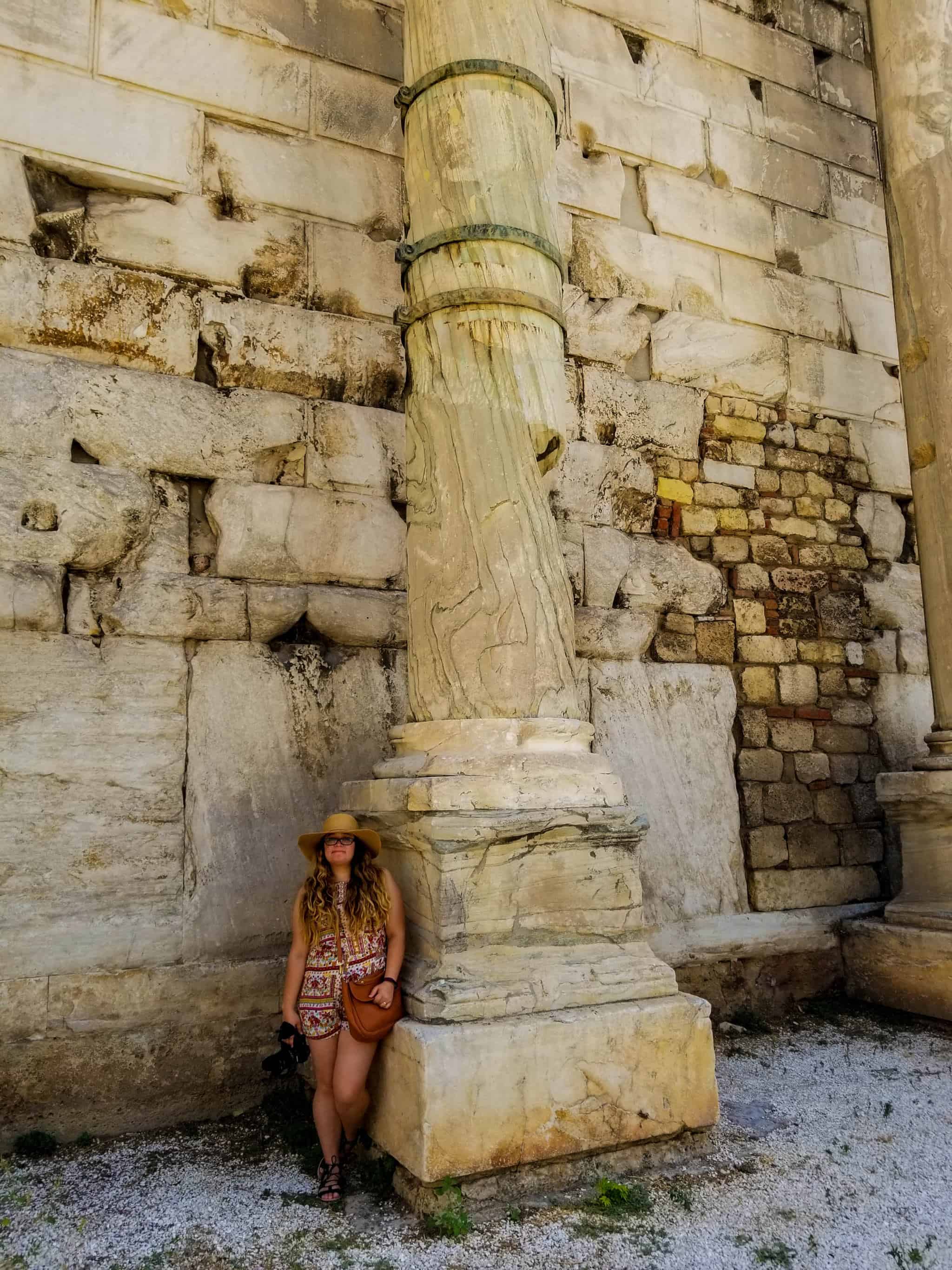
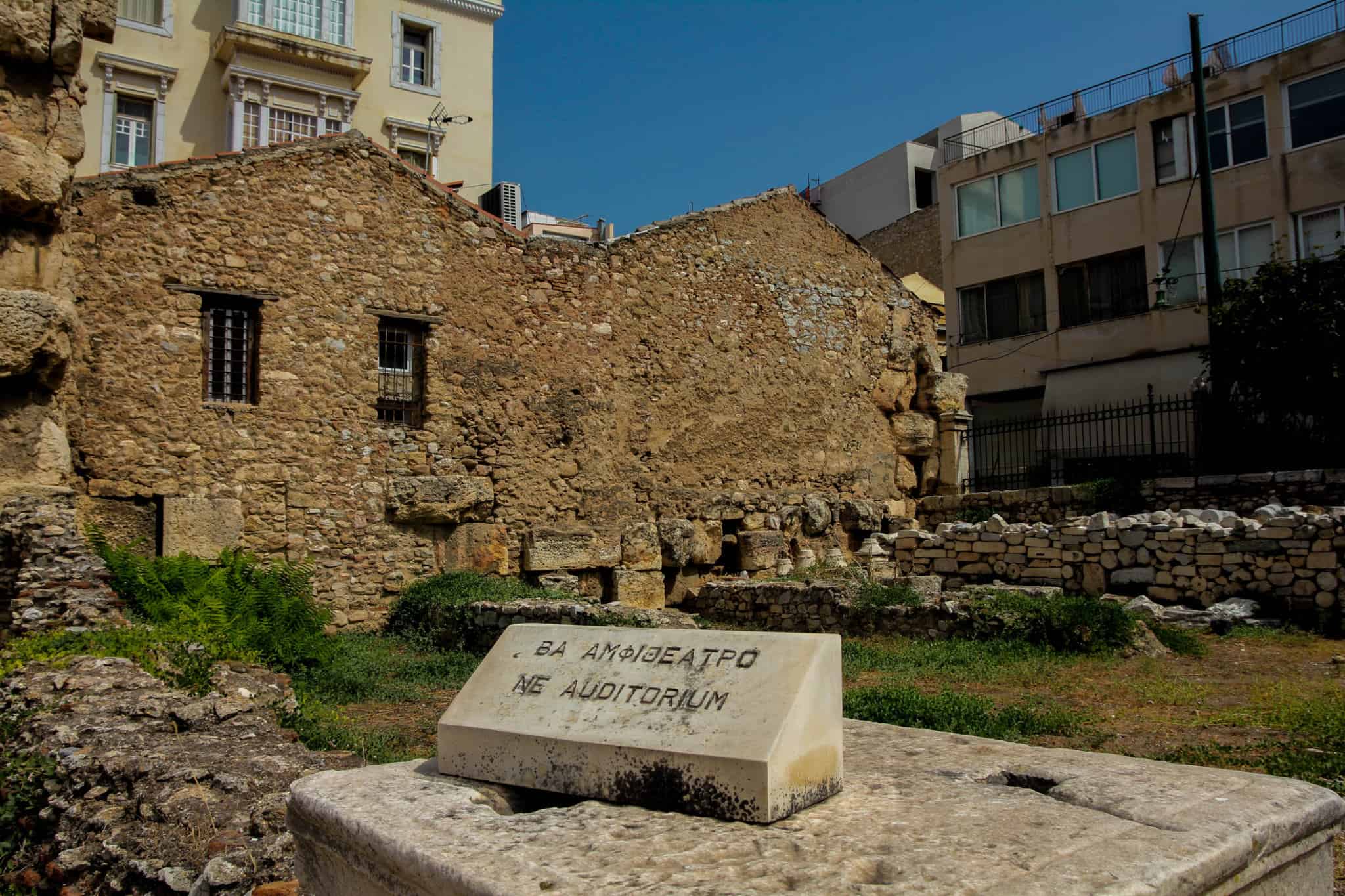
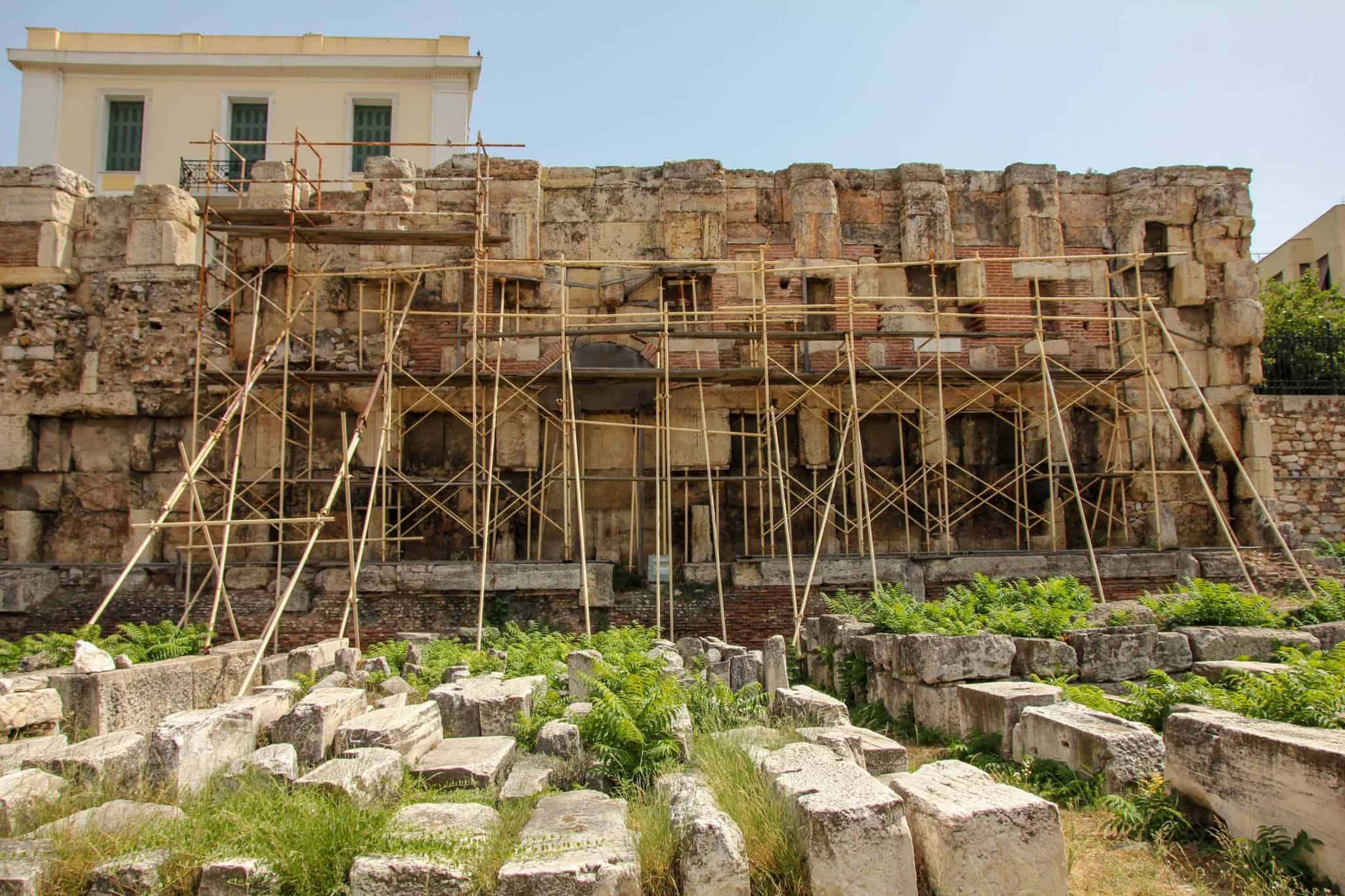
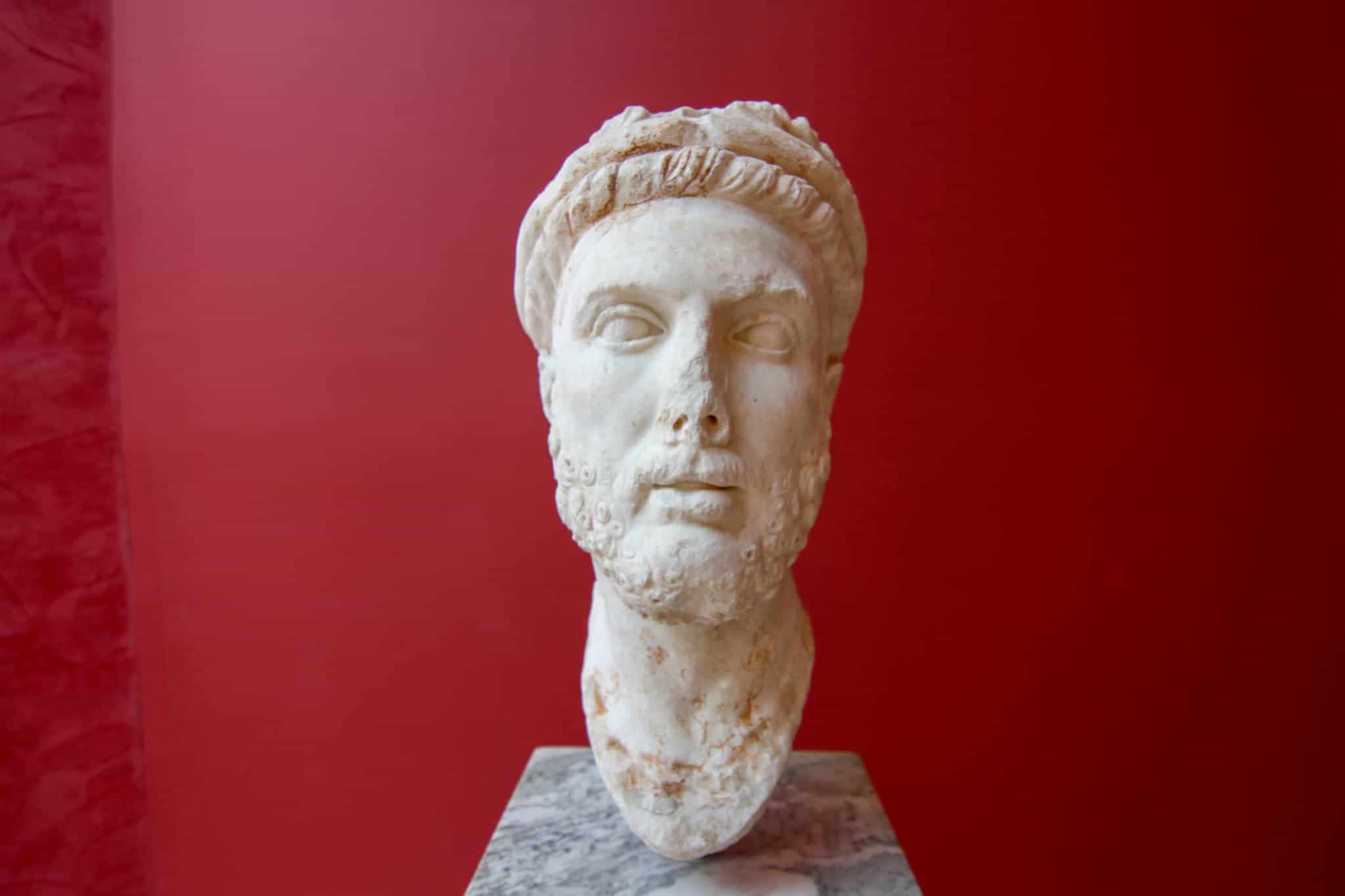
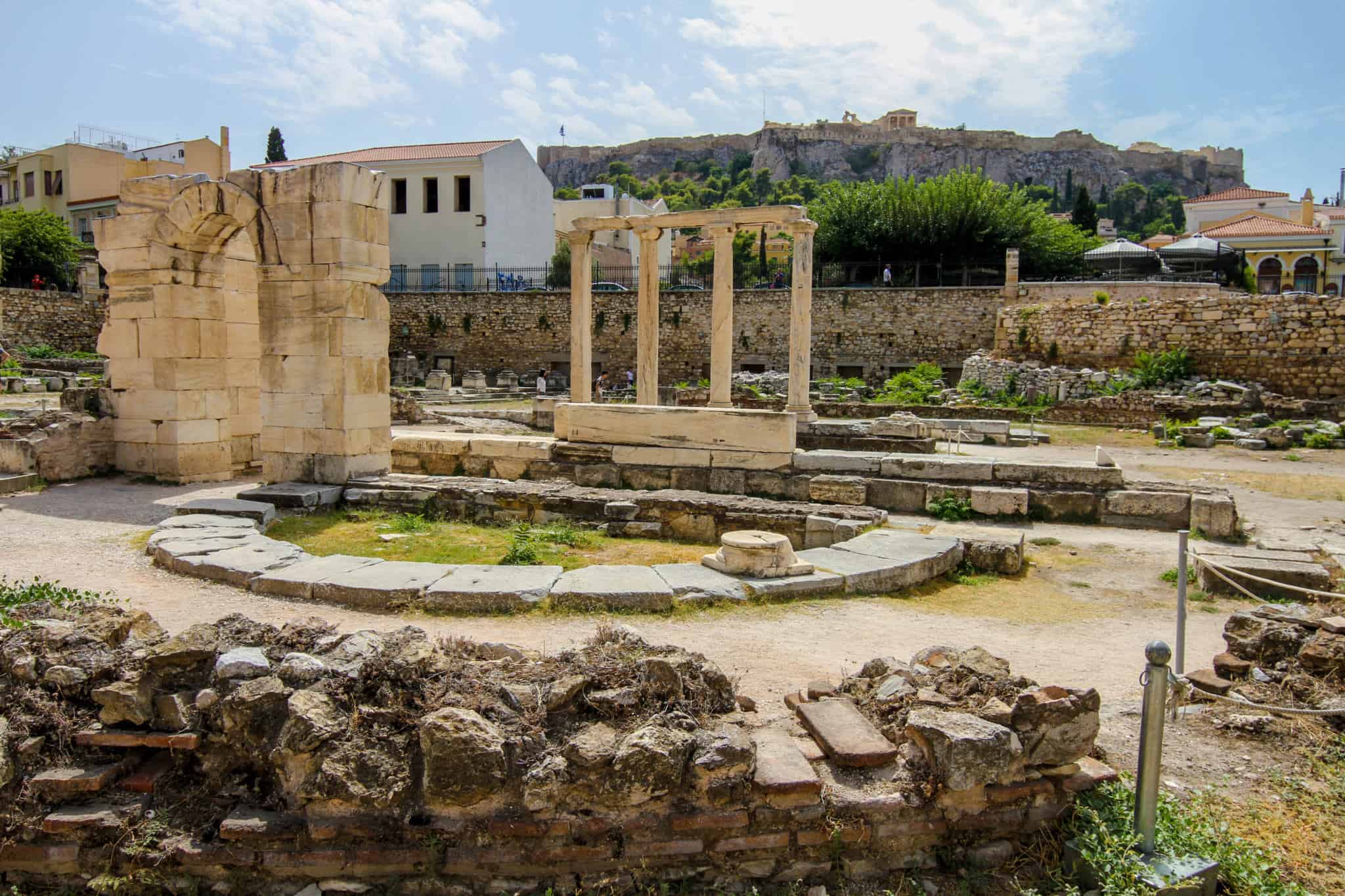
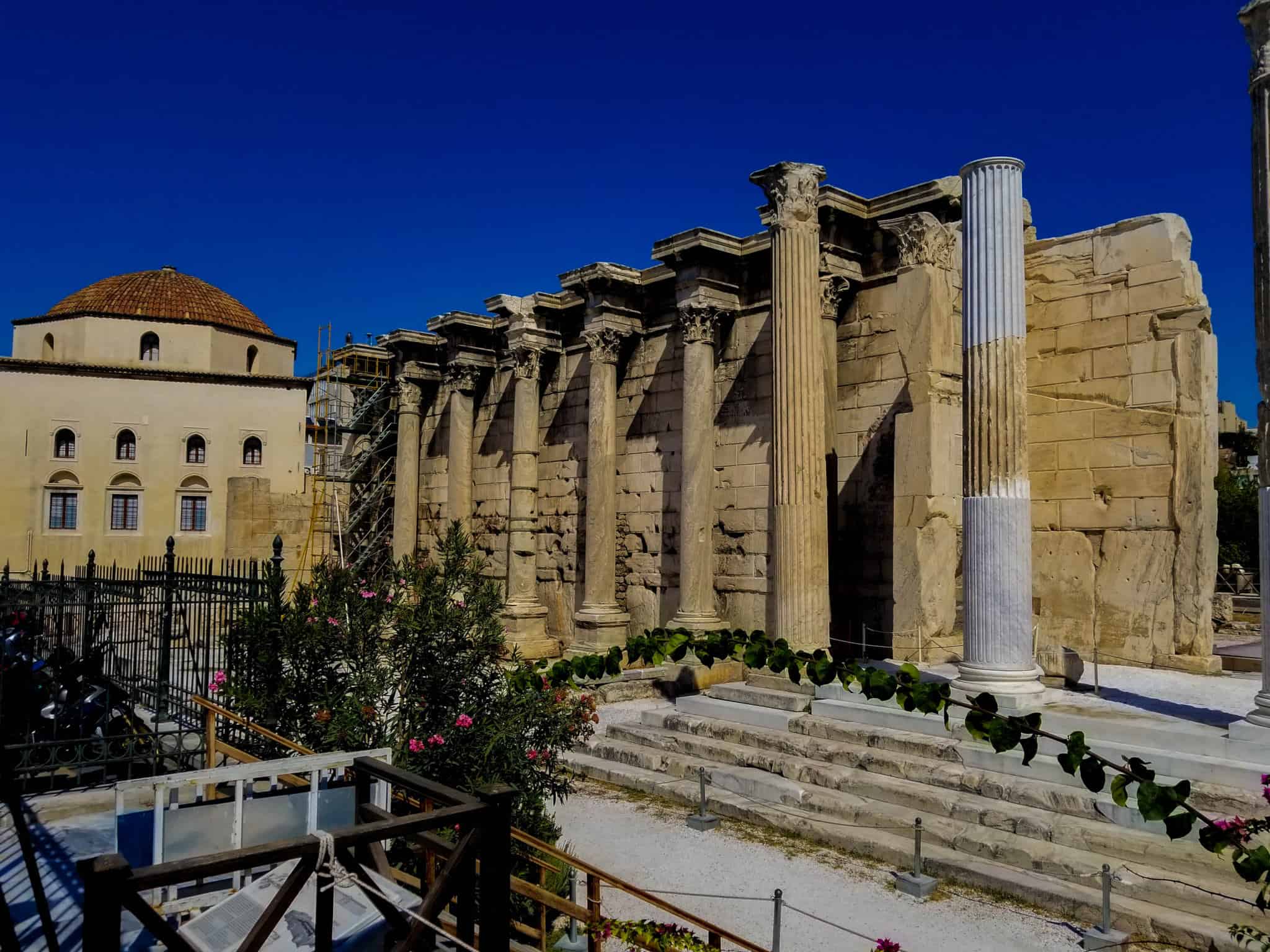
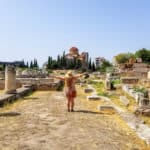
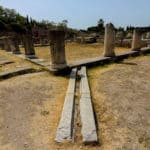
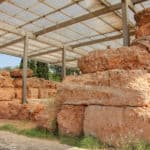
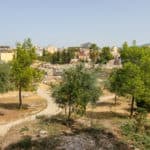
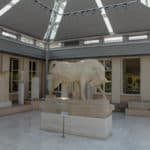
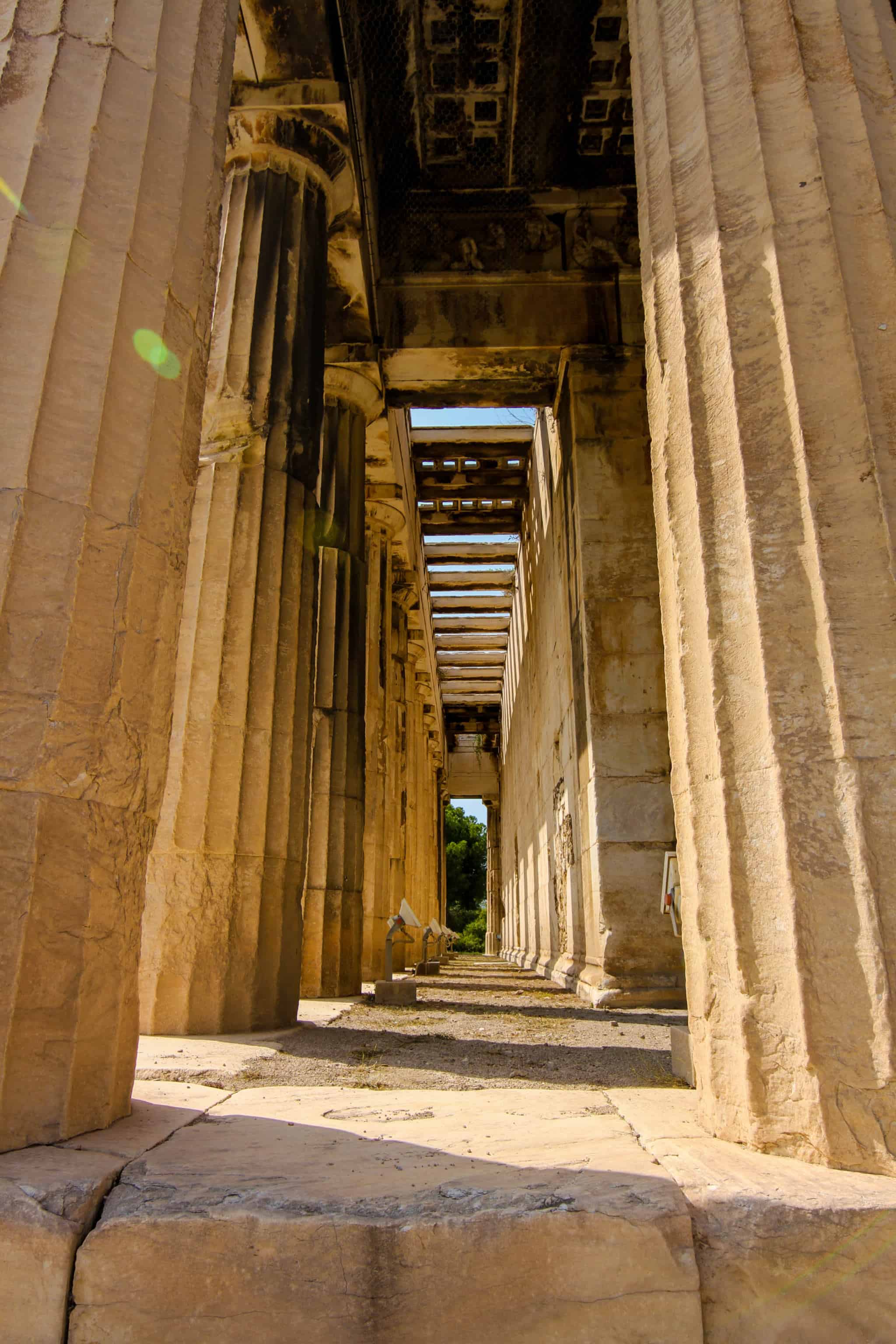
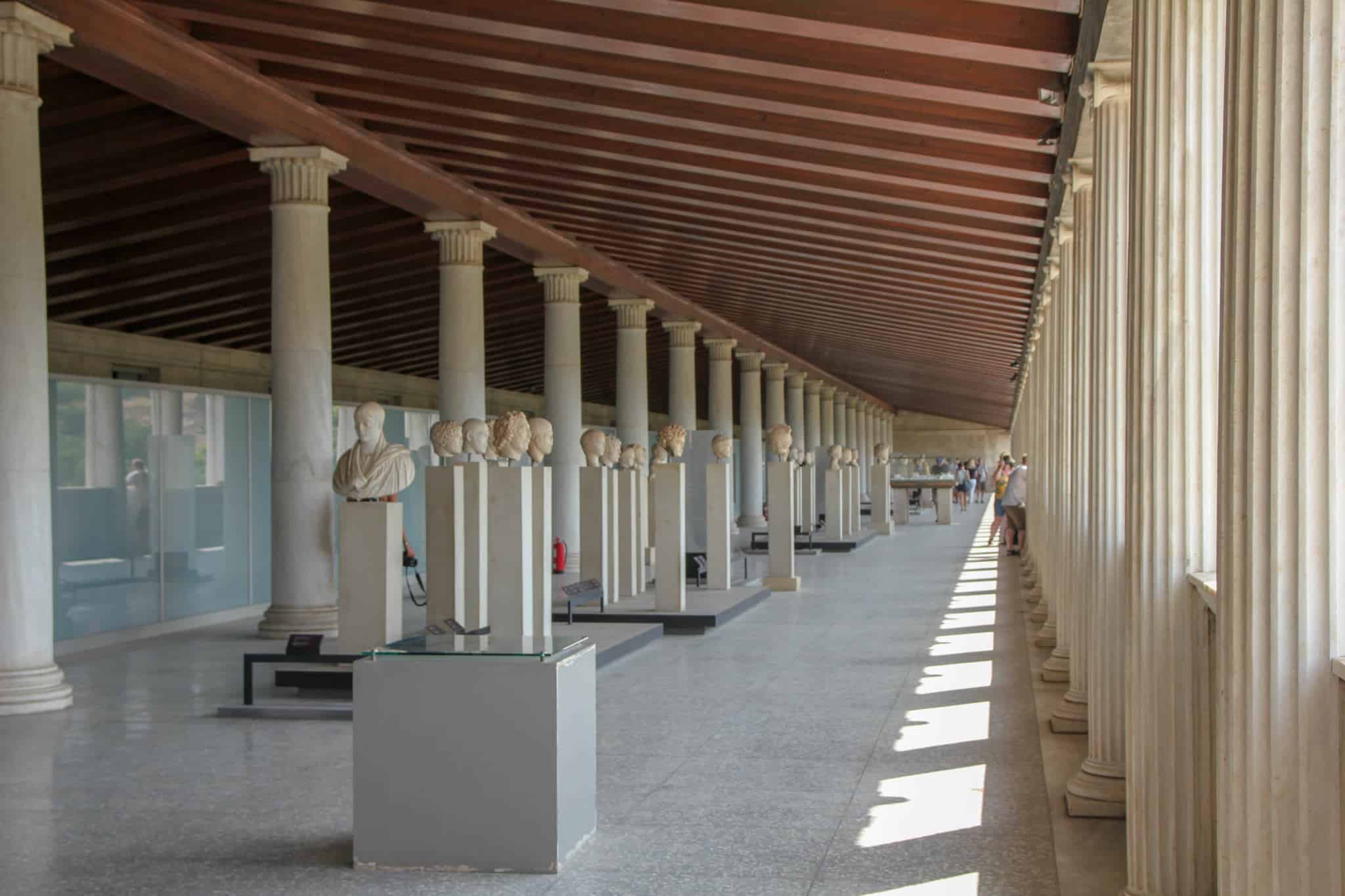
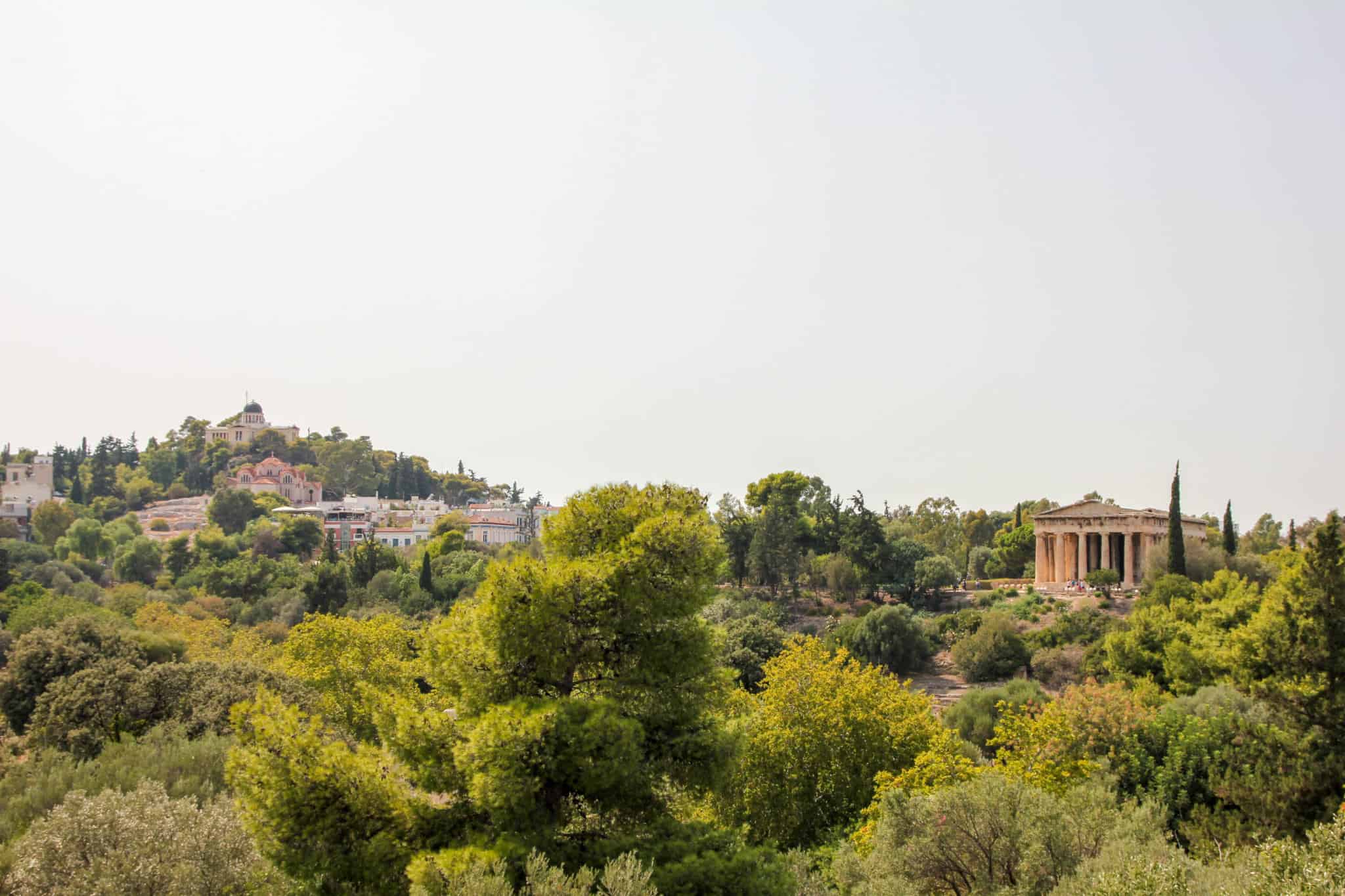
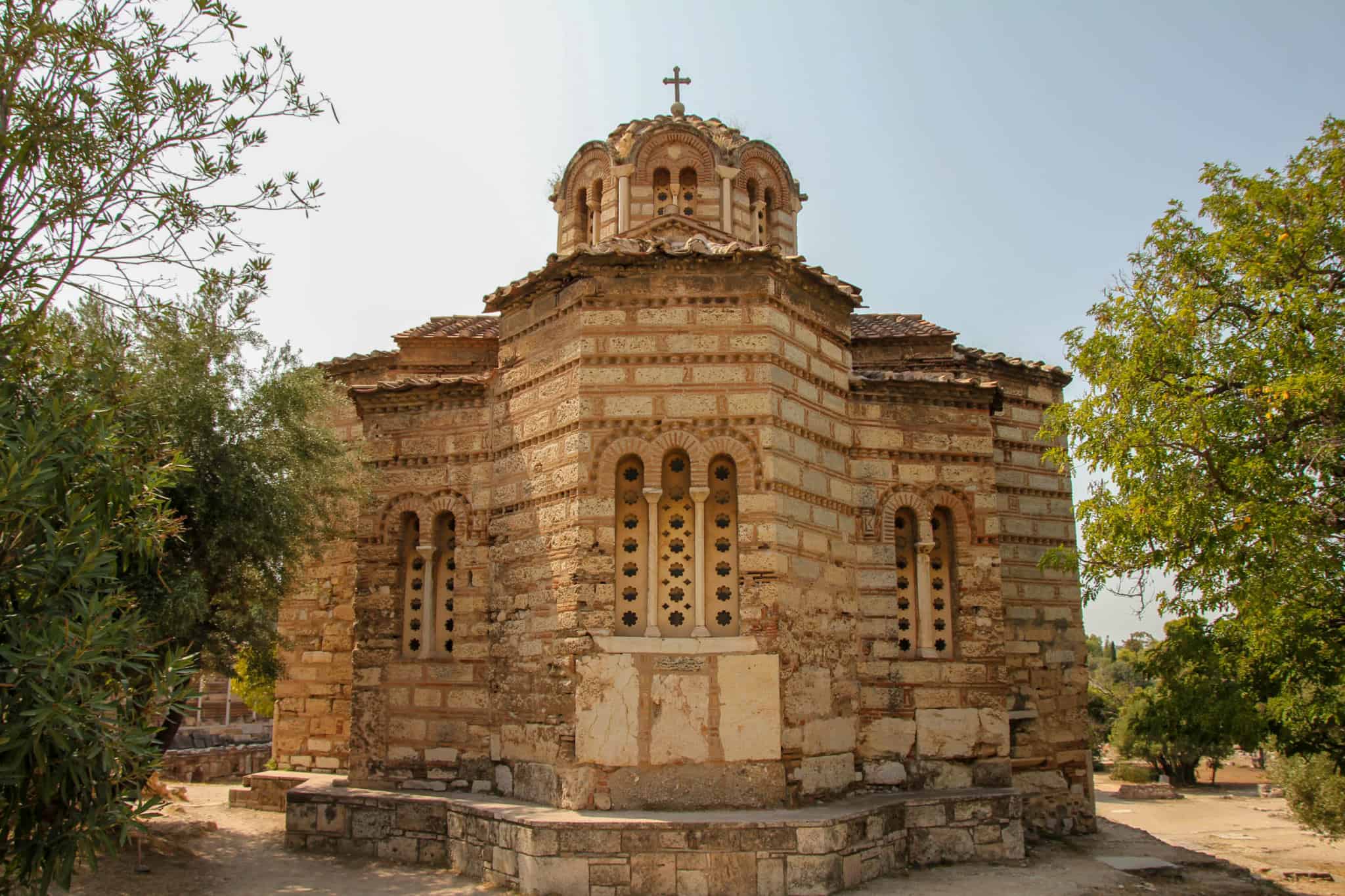
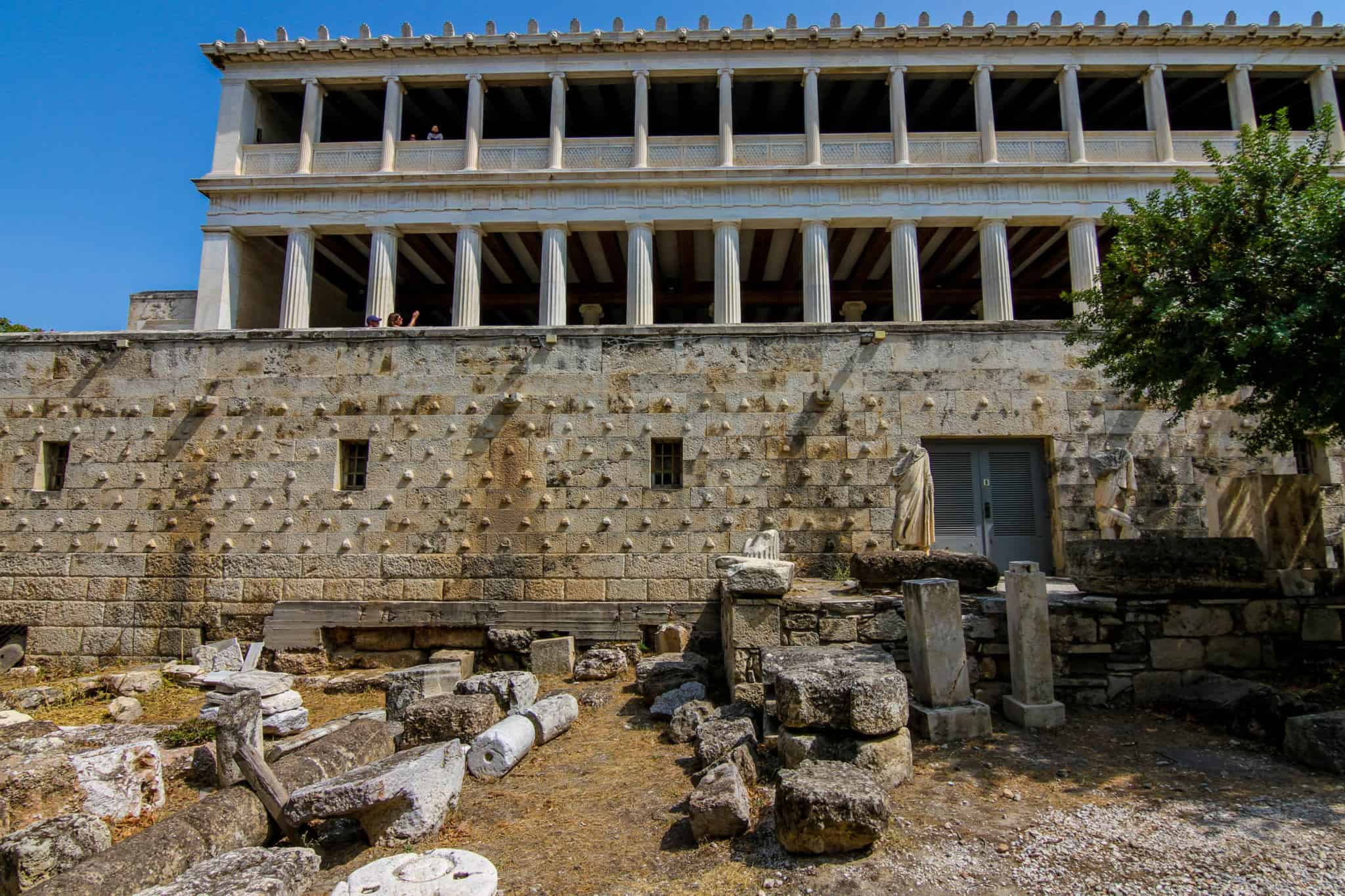
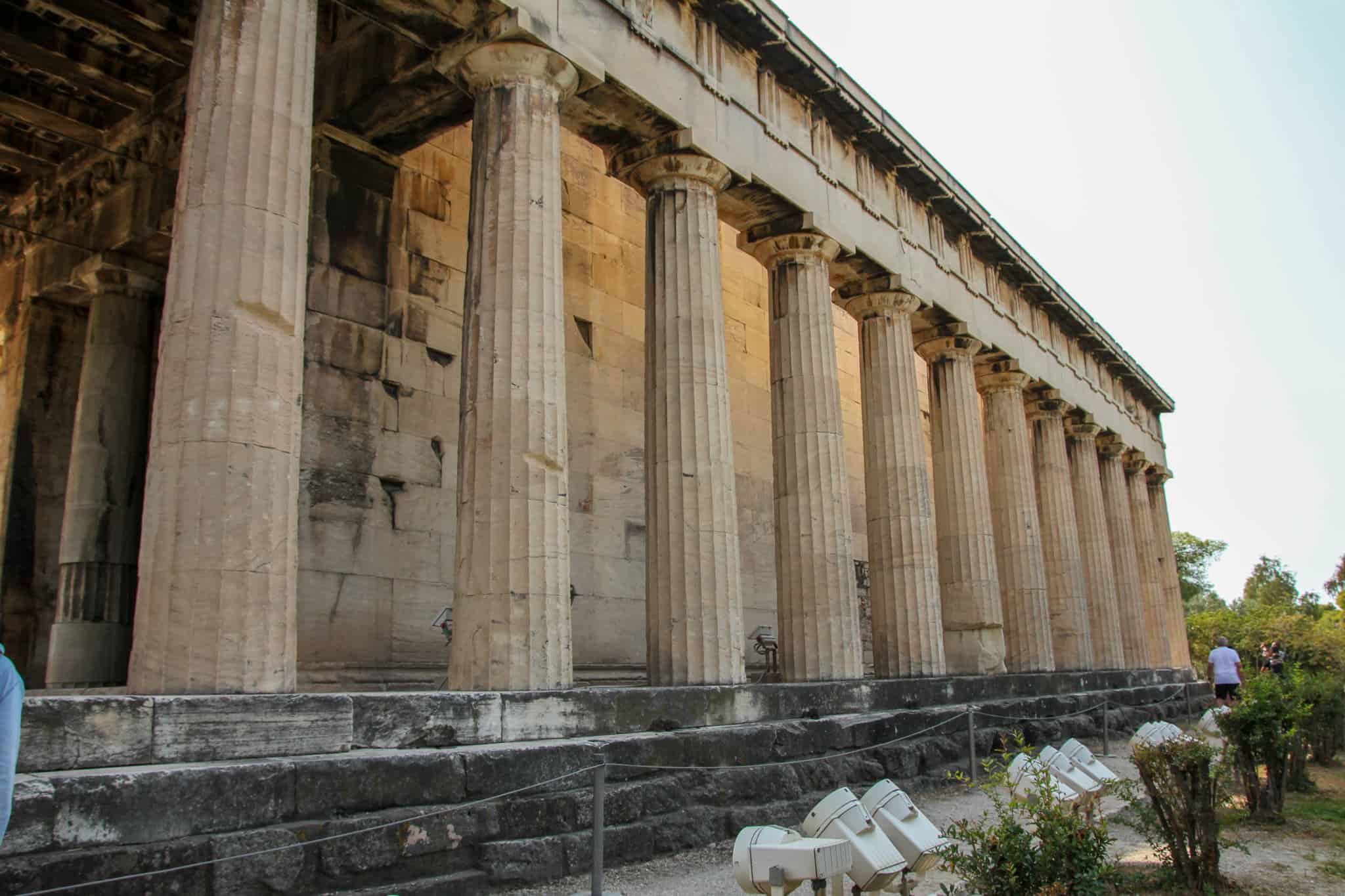
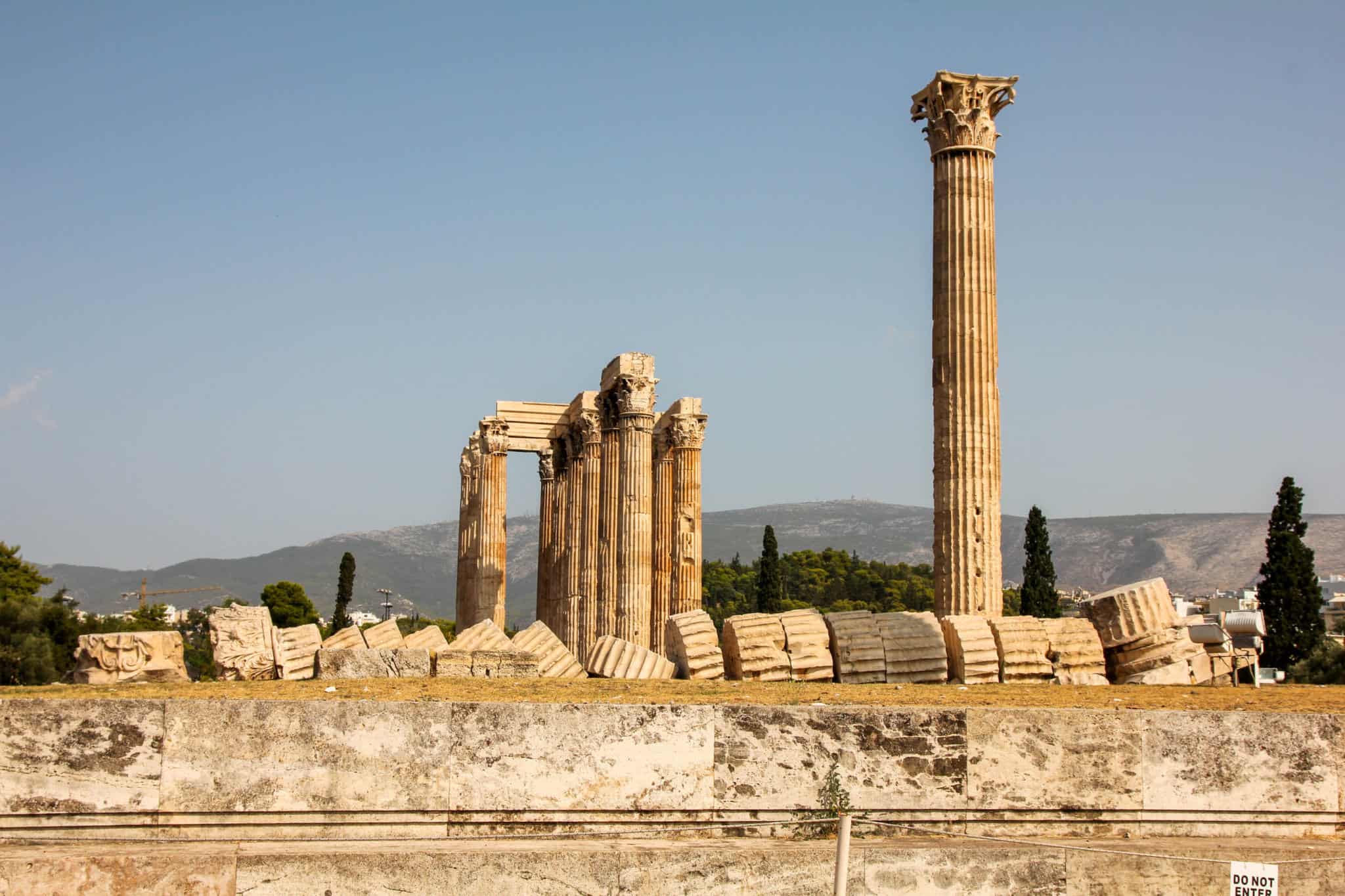
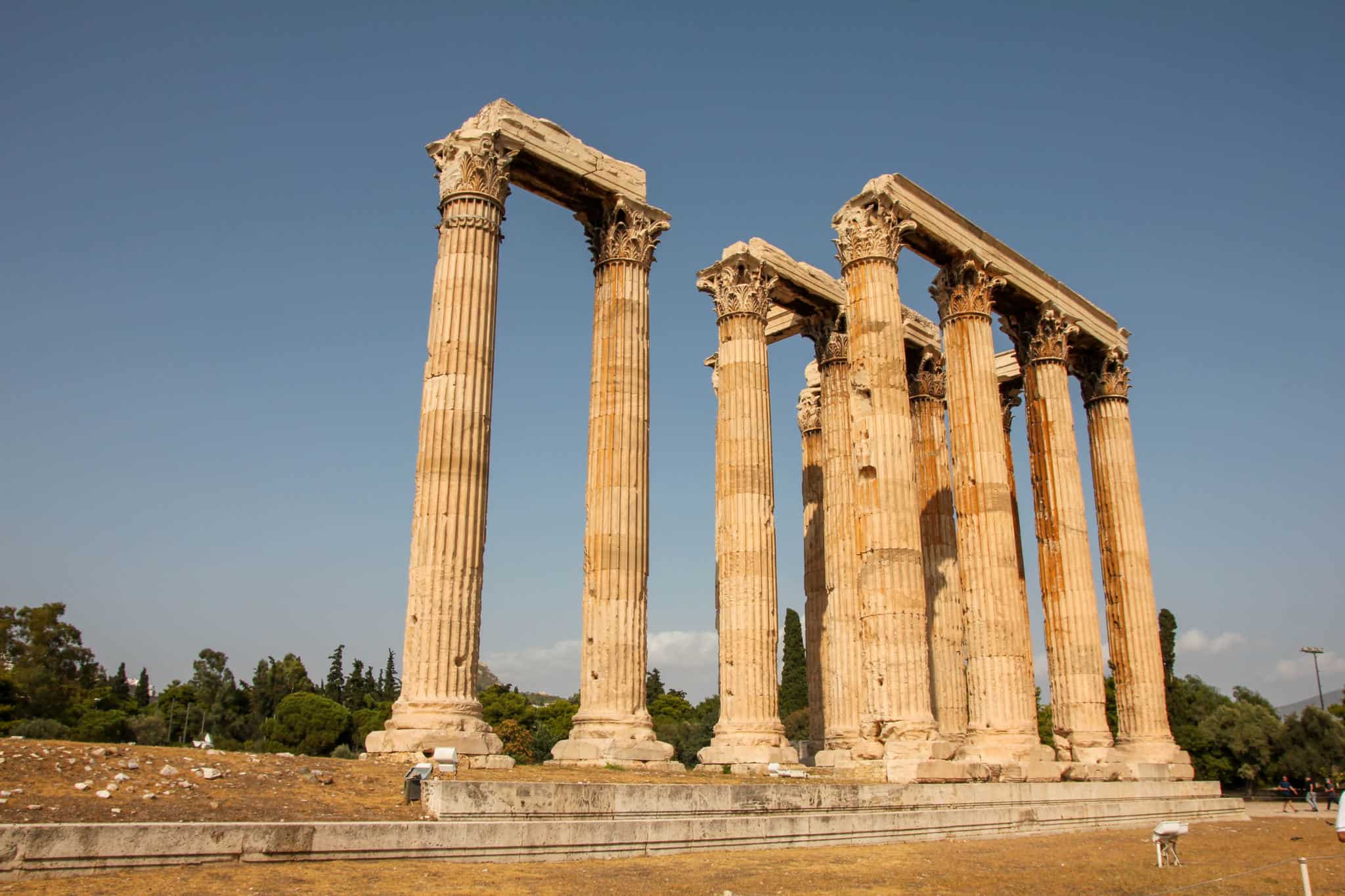
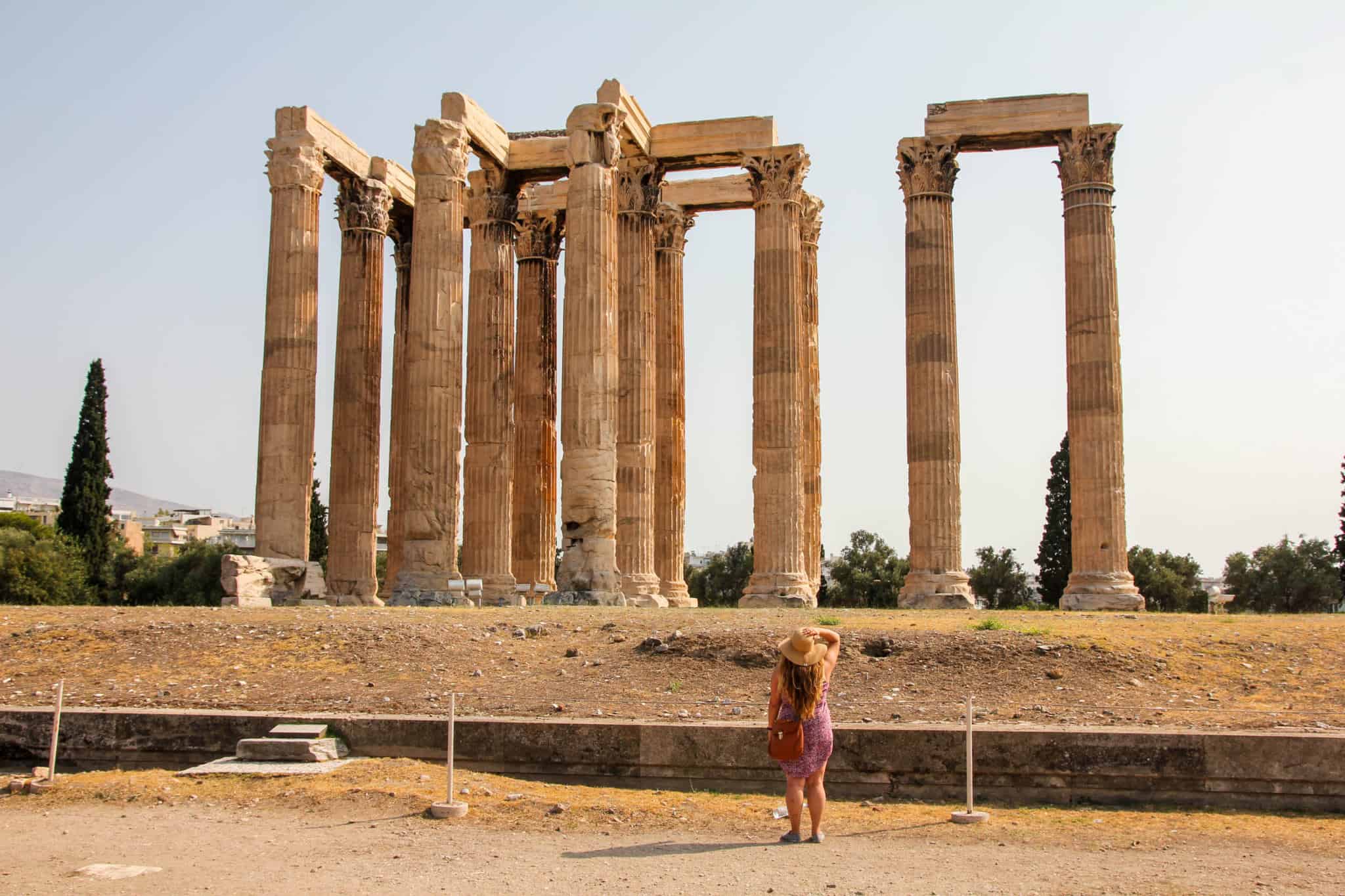
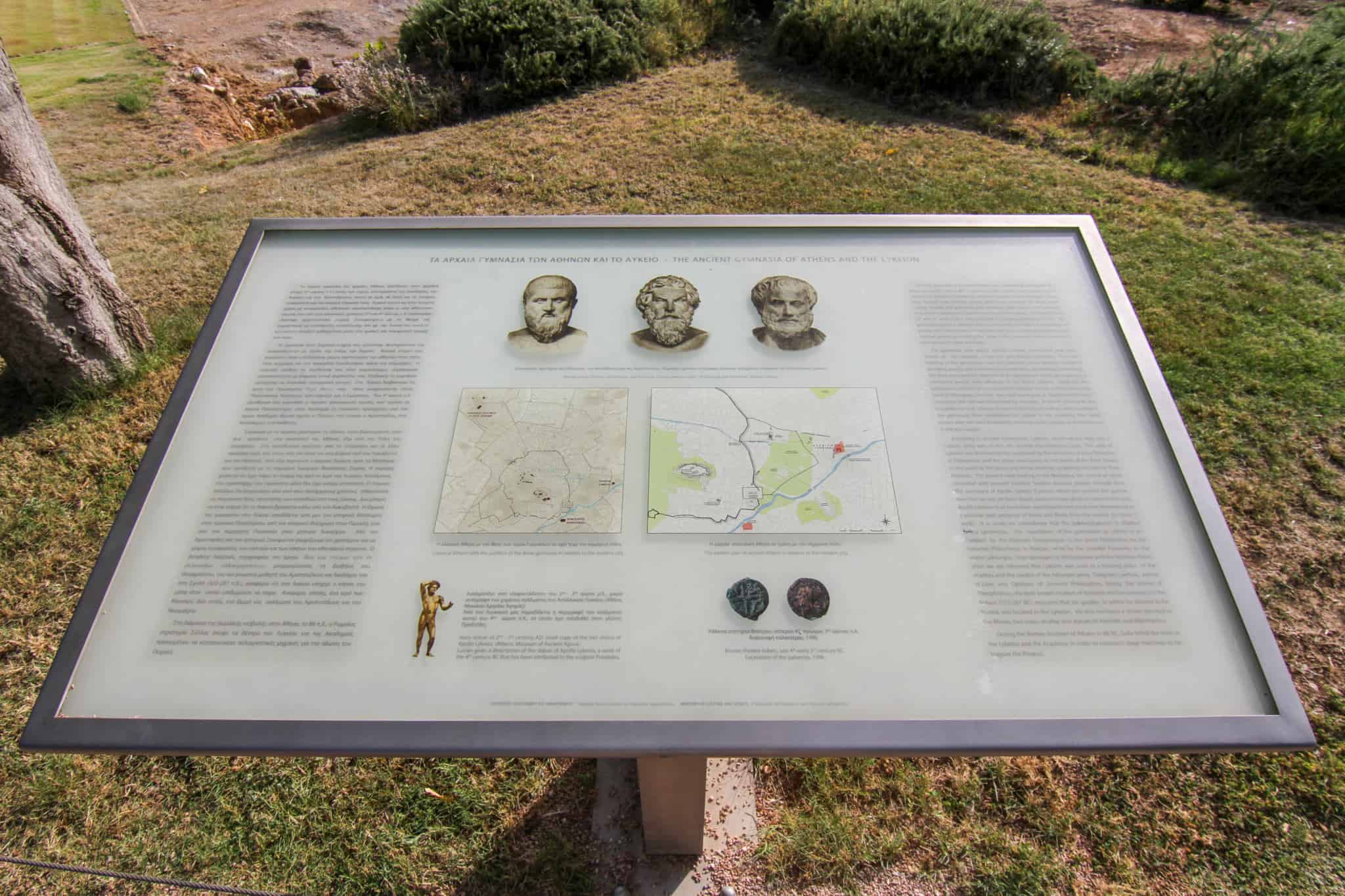
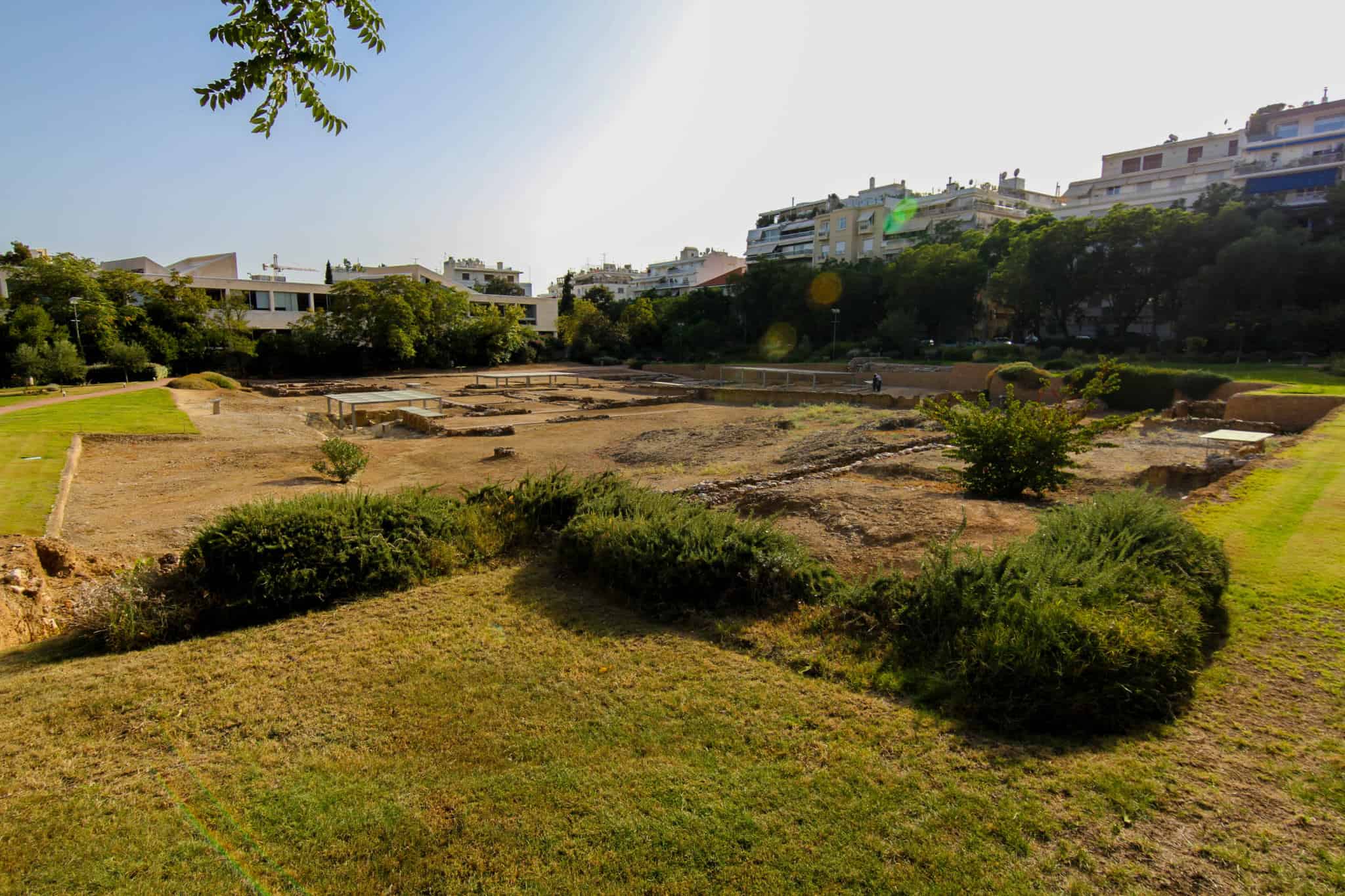
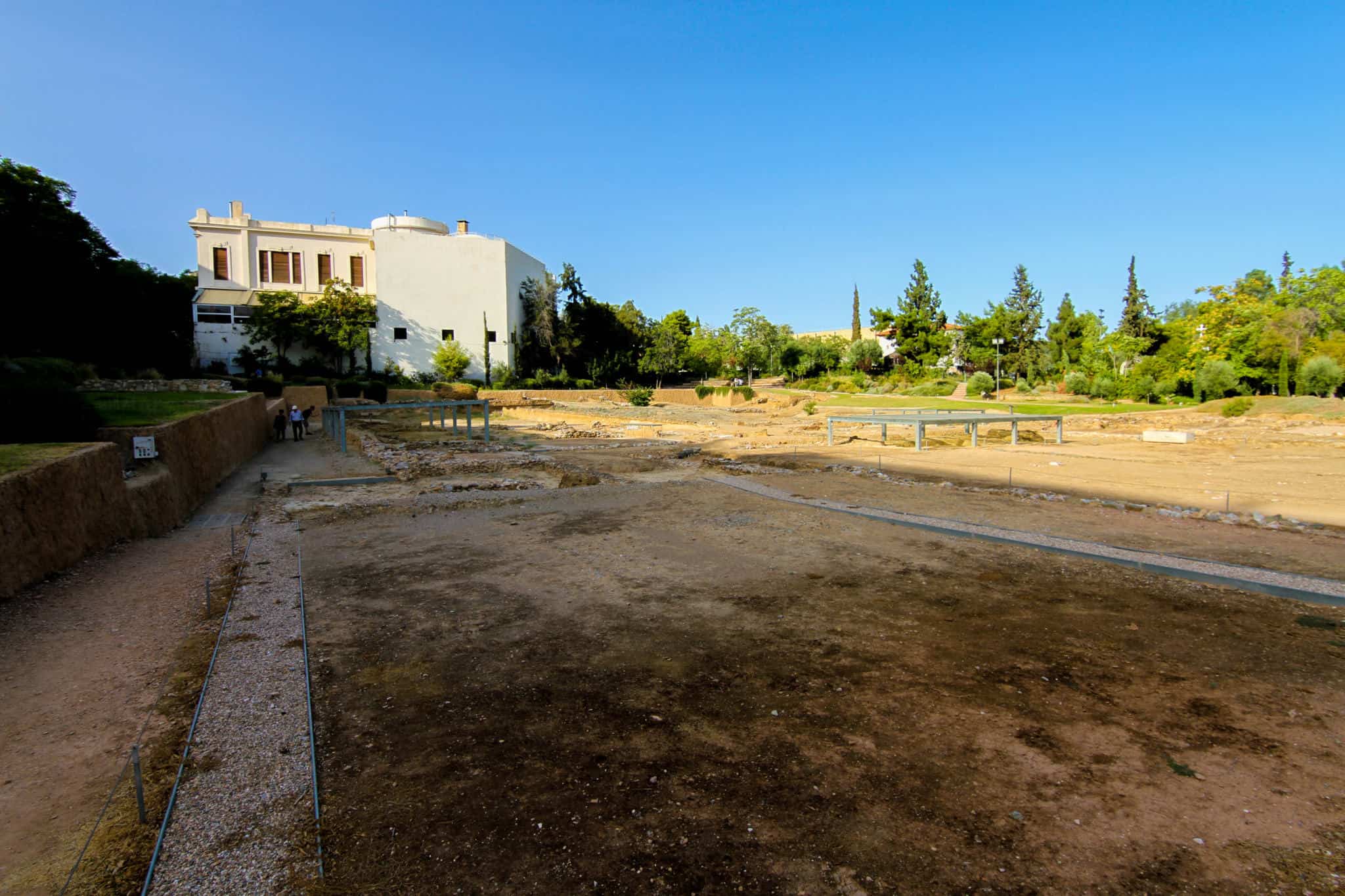
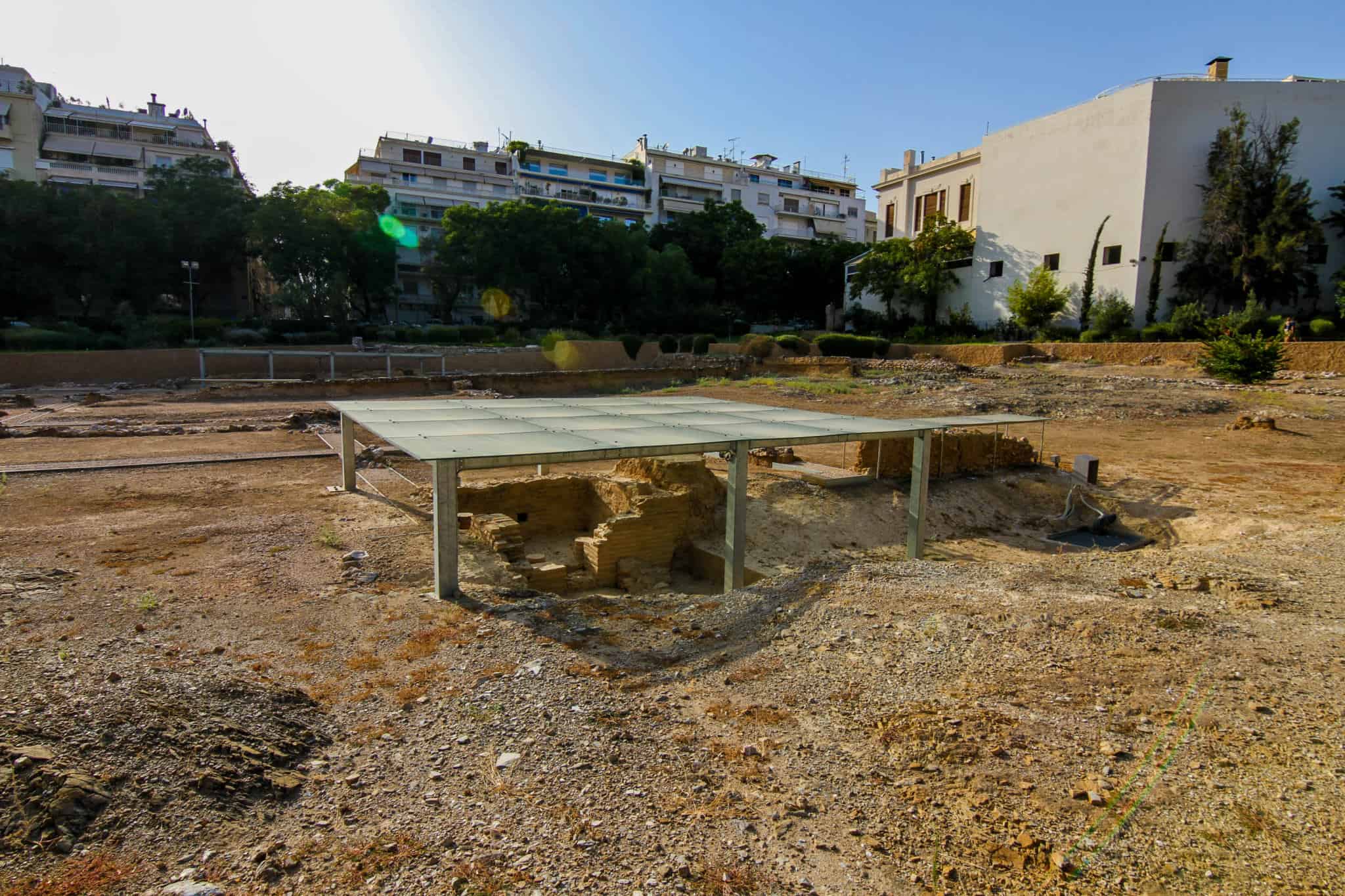
Beautiful post! I love your photos and Athens is such a special place to me and my fiancé. That’s where we got engaged! Thank you for showcasing so much more that Athens has to offer (aside from the Acropolis). I love Athens and your post made me miss it so much!
Author
Congrats on the engagement! Athens really is a fantastic city and I wish more people would spend a little more time in it!
Greece really is something special, but if I can say, I didn-t feel very safe in Athens. Even the hotel guy informed us to be careful at night, especially if we were walking only in a group of girls. many times random guys ”harassed” us with some unplessant comments. BUt all the rest of Greece was a dream
Author
I think being alone as girls may make it a little tougher! I traveled with my husband and had zero problems so I can’t speak to the travelling alone situation but I’m sure Athens, like most capital cities, would have pockets that aren’t safe